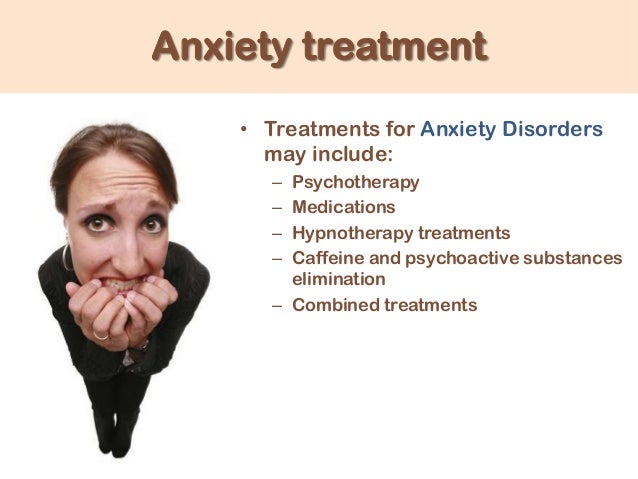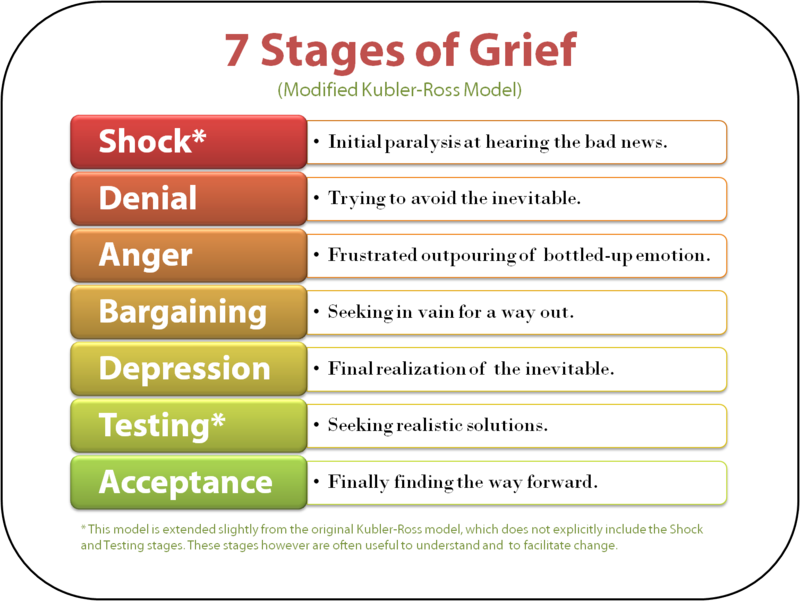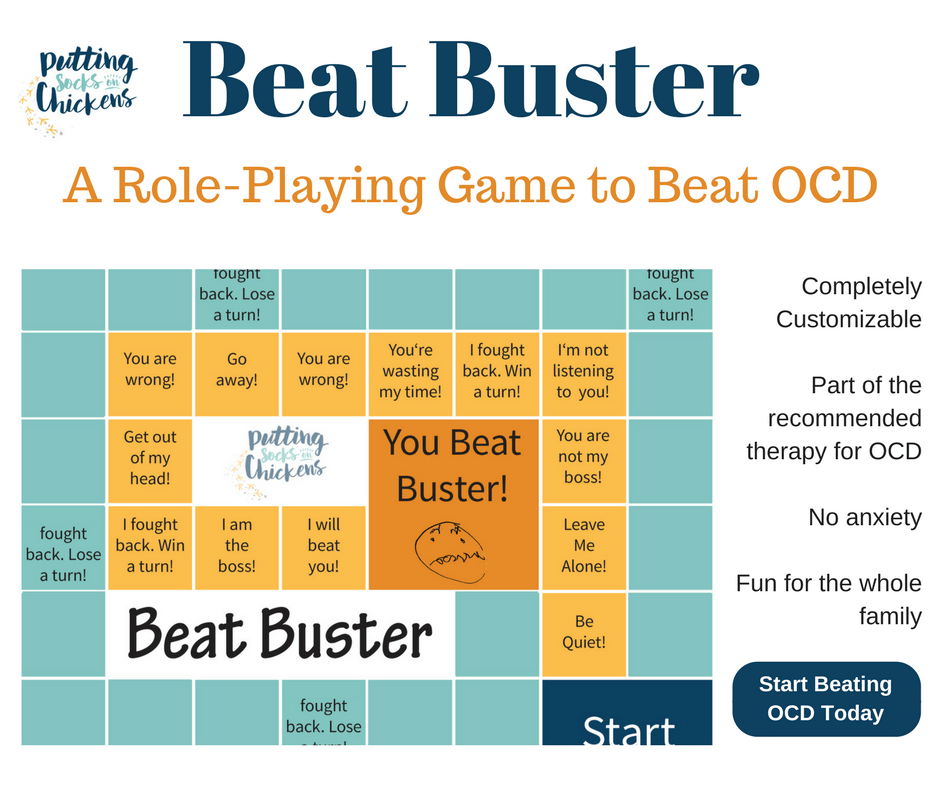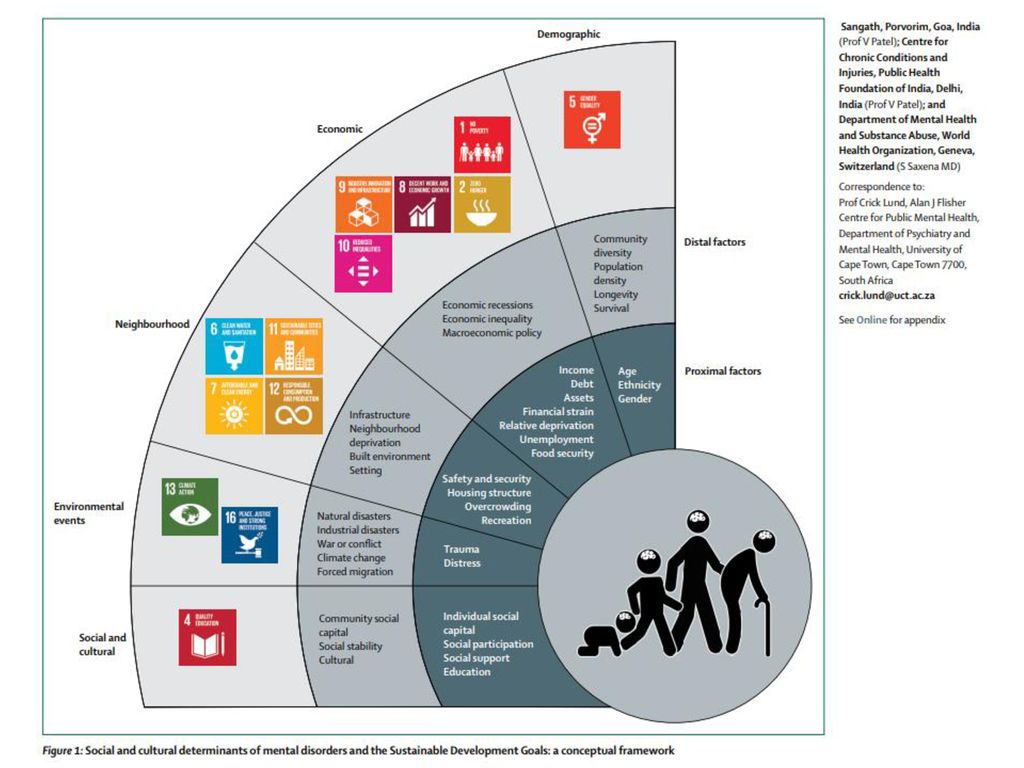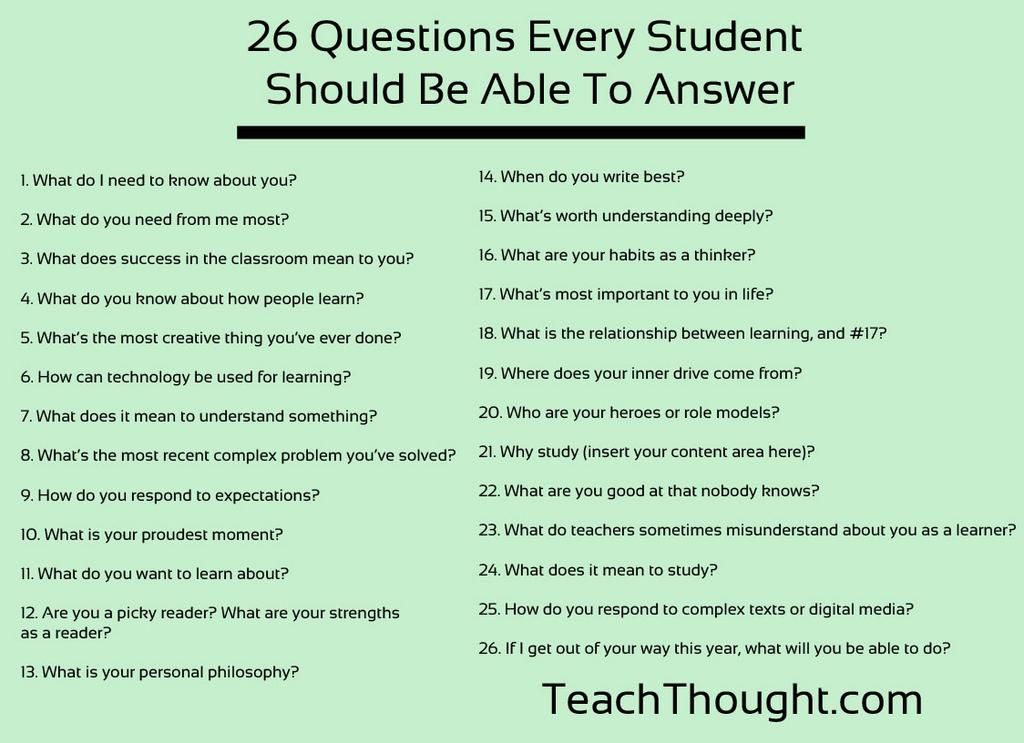Types of anxiety therapy
Different Types of Therapy: Which is Best for Anxiety?
Anxiety is a normal and healthy emotion, and you might experience higher anxiety levels before a first date or before giving an important presentation. However, when a person feels consistent and overwhelming anxiety, it might become a mental health condition. Anxiety disorders are a category of mental health conditions characterized by excessive fear, worry, and apprehension.
If you’re struggling with excessive worry or high anxiety levels, you’re not alone. According to the National Institute of Mental Health (NIMH), anxiety disorders are among the most common mental health conditions in the United States, and approximately 19% of the general population has a diagnosed anxiety disorder.
Anxiety can interfere with everyday life, and feelings of anxiety can be difficult to control. Fortunately, anxiety disorders are highly treatable, with many anxiety patients noticing significant improvement from psychotherapy.
Types of Anxiety Disorders
If you experience intense, persistent, and excessive anxiety, you may have a diagnosable anxiety disorder. The most common types of anxiety disorders include:
- Generalized anxiety disorder (GAD): Individuals with GAD struggle with chronic anxiety, nervousness, and worry, even when there is little or nothing to provoke it.
- Social anxiety disorder (social phobia): Those with social anxiety disorder experience excessive worry, low self-esteem, and excessive self-consciousness in social situations. In some cases, social phobia is limited to a specific type of situation. In more severe cases, social phobia can cause significant psychological distress in everyday social situations, leading to avoidant behavior.
- Panic disorder: Unexpected and repeated panic attacks characterize panic disorder. For some people, the fear of experiencing a panic attack can make it difficult to function daily.
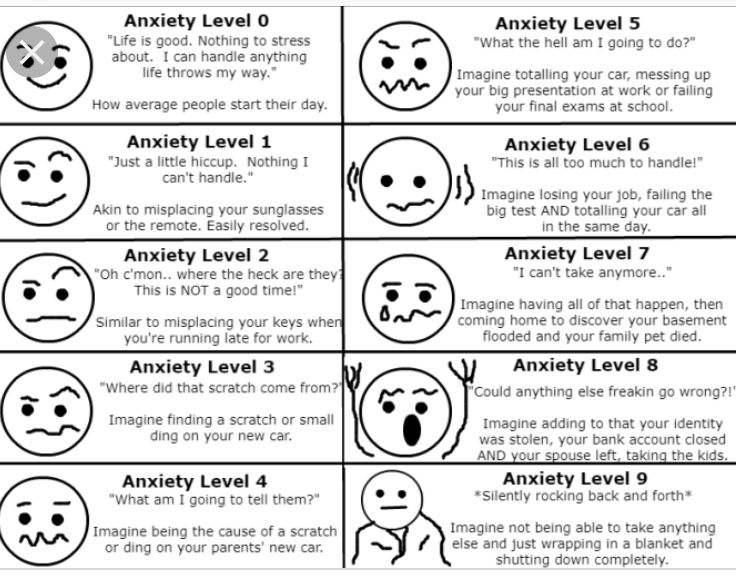
- Phobias: Individuals with specific phobias struggle with severe anxiety toward a particular object or situation. In more severe cases, particular phobias can lead to avoidant behavior, causing individuals to avoid everyday circumstances. For example, agoraphobia, which involves an overwhelming fear of situations where there is no “escape,” can make it challenging to leave the house.
- Obsessive-compulsive disorder (OCD): Those with OCD experience persistent, intrusive thoughts (obsessions), which lead to repetitive behaviors (compulsions). Individuals with OCD typically use compulsions such as counting or cleaning to reduce the anxiety caused by obsessions.
- Posttraumatic stress disorder (PTSD): After exposure to a traumatic event, some individuals develop PTSD. Those with post-traumatic stress disorder experience intense anxiety symptoms after an adverse event ranging from nightmares to self-destructive behaviors, such as substance misuse.

- Separation anxiety disorder: Individuals with separation anxiety experience excessive anxiety when separated from home or loved ones. Separation anxiety is a normal part of development, but extreme separation anxiety is one of the most common childhood anxiety disorders. In some cases, separation anxiety can occur during adolescence and adulthood.
If you think you might have an anxiety disorder, it’s essential to seek professional help. Before you’re officially diagnosed with clinical anxiety, your psychologist or clinician will administer a diagnostic interview to determine whether you meet the diagnostic criteria outlined by the Diagnostic and Statistical Manual of Mental Disorders (DSM-5). DSM-5 diagnostic criteria include feeling excessive anxiety more often than not and experiencing other anxiety symptoms such as insomnia, headaches, and nausea.
Ready for an appointment?
Symptoms of Anxiety
For most people, anxiety involves a combination of psychological and physical symptoms.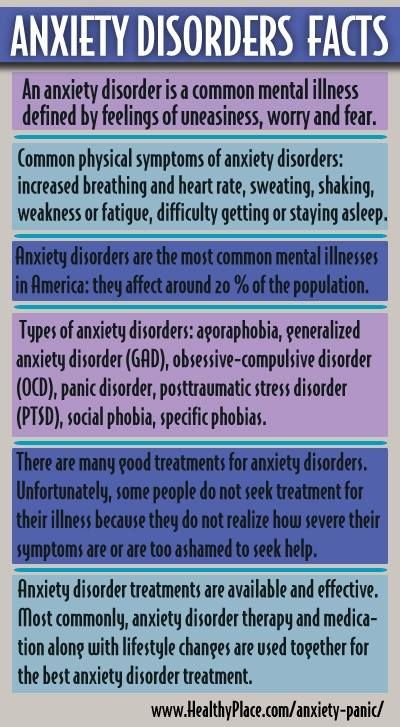 When the symptoms of anxiety interfere with your everyday life, they could be signs of an anxiety disorder.
When the symptoms of anxiety interfere with your everyday life, they could be signs of an anxiety disorder.
According to the American Psychiatric Association, the symptoms of anxiety include:
- Sleeping problems, such as fatigue and insomnia
- Unexplained aches, muscle tension, and headaches
- Digestive problems, such as nausea
- Excessive worry
- Low self-esteem
- Rapid heart rate
- Difficulty concentrating
- Irritability
Treatment Options for Anxiety
Although anxiety can feel debilitating, anxiety disorders are highly treatable. While psychotherapy is typically used as a first-line treatment for anxiety, some people may benefit from a combination of medication and psychological therapy. If you think you may have an anxiety disorder, exploring the following treatment options can help you manage your symptoms and improve your quality of life.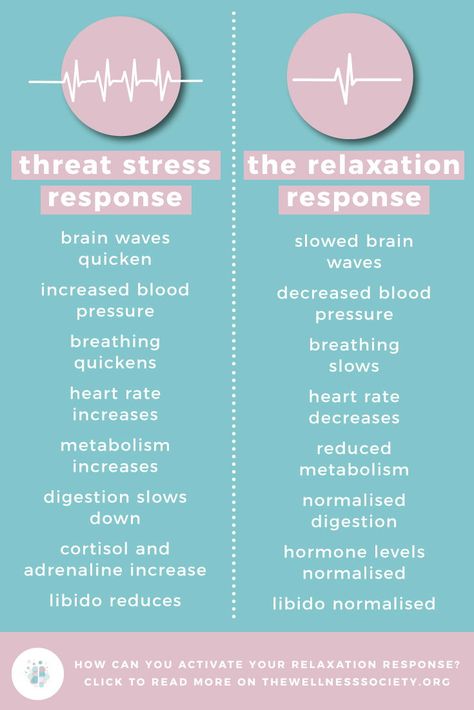
Therapy
Psychotherapy, or talk therapy, is integral to the success of your anxiety treatment plan. Therapy interventions such as cognitive-behavioral therapy (CBT), interpersonal therapy (IPT), psychodynamic psychotherapy, and exposure therapy are proven research-based treatments in helping individuals with anxiety disorders manage their mental health. Working with a psychologist, counselor, or social worker can help you learn new ways to cope with anxiety in daily life.
Medication
Depending on the severity of your specific symptoms, your psychiatrist may recommend a combination of medication and psychotherapy. While pharmacotherapy can’t cure anxiety, medication can help you manage the symptoms of anxiety and increase your quality of life.
Many types of medications can help treat anxiety, and you and your clinician may have to try several medications to find the right medication and dose with minimal side effects. The pharmacologic treatment of anxiety disorders typically involves antidepressants, anti-anxiety medications, beta-blockers, or benzodiazepines, with each having its mechanism of action and effects on anxiety.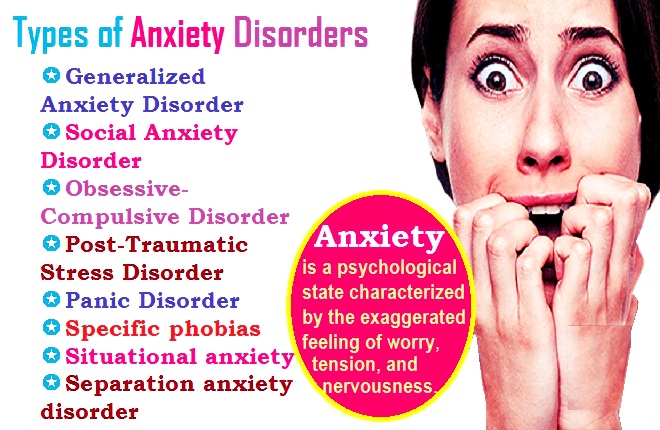 The most common medications used in the treatment of anxiety include:
The most common medications used in the treatment of anxiety include:
- Benzodiazepines promote muscle relaxation and calm the mind. Examples of benzodiazepines include lorazepam (Ativan), diazepam (Valium), and clonazepam (Valium).
- Buspirone is used to treat both short-term and long-term anxiety by altering chemicals in the brain that regulate mood.
- Selective serotonin reuptake inhibitors (SSRIs) are antidepressants that increase the body’s serotonin levels. Examples of SSRIs include sertraline (Zoloft), paroxetine (Paxil), and fluoxetine (Prozac).
- Tricyclic antidepressants work similarly to SSRIs in treating most anxiety disorders. Like SSRIs, psychiatrists start with a low dose and gradually increase the dose depending on the side effects and symptom improvement.
- Serotonin-norepinephrine reuptake inhibitors (SNRIs) boost the body’s serotonin and norepinephrine levels by blocking or delaying their reuptake.
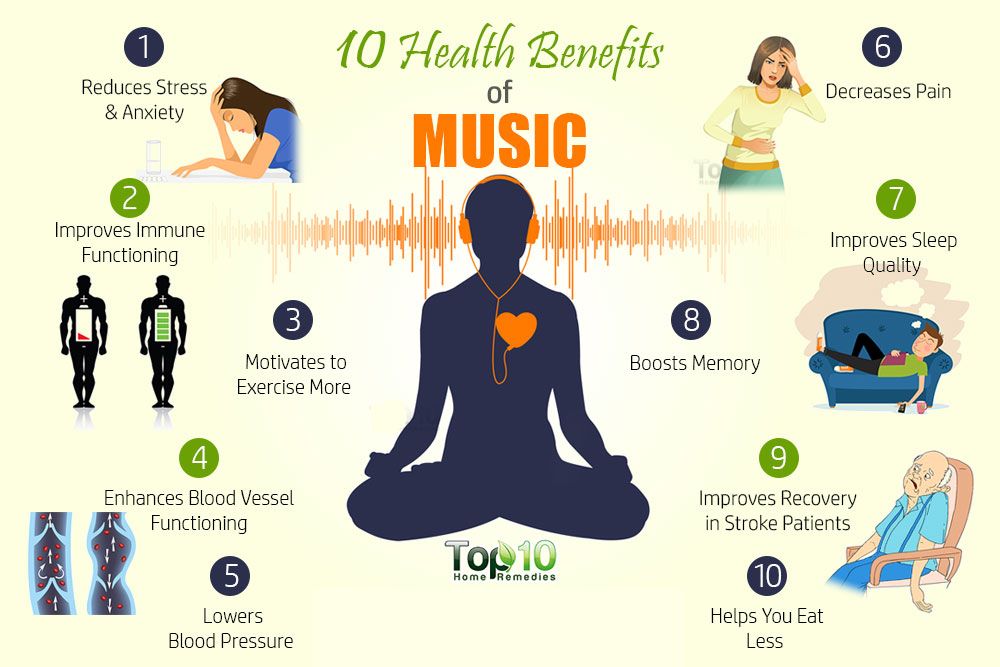 Venlafaxine (Effexor) is commonly prescribed for anxiety disorders.
Venlafaxine (Effexor) is commonly prescribed for anxiety disorders.
Although you might notice a significant difference in your symptoms after starting medication, it’s essential to keep in mind that pharmacotherapy is not a substitute for psychotherapy. Instead, the medication should supplement psychological therapy. Additionally, be sure to consult your psychiatrist before taking herbal supplements or vitamins with your prescribed medication.
Check-Ups
Sometimes, the symptoms of anxiety can mimic the symptoms of medical conditions, such as heart disease. To take care of your physical health, it’s essential to schedule regular appointments with your primary care provider. After ruling out possible physical health conditions, your primary care doctor can give you a referral to local mental health services.
Self-Care
When you take care of your body and mind, you’ll be able to cope better with everyday stresses and emotional strains. If you’re dealing with a hectic schedule, it can help to view self-care as an investment in your mental and physical health.
To reduce anxiety symptoms, be sure to avoid caffeine and nicotine, make time for your favorite hobbies, and engage in regular exercise. In a randomized controlled trial by Nyberg et al., researchers found that physical activity reduced the symptoms of anxiety by releasing endorphins, with anxiety patients reporting significant improvement in symptoms.
Social Support
The benefits of a robust social support network are both far-reaching and long-lasting. According to a meta-analysis by Harandi et al., the presence of a social support network can make a significant difference in an individual’s ability to manage their mental health.
If you don’t feel comfortable opening up to friends or family members, support groups are available for anxiety patients. Joining a support group enables you to voice your concerns, relate to others in a group setting, and learn valuable social skills. Many studies have also shown that support groups and group therapy are valuable treatment components for individuals with posttraumatic stress disorder following a traumatic experience.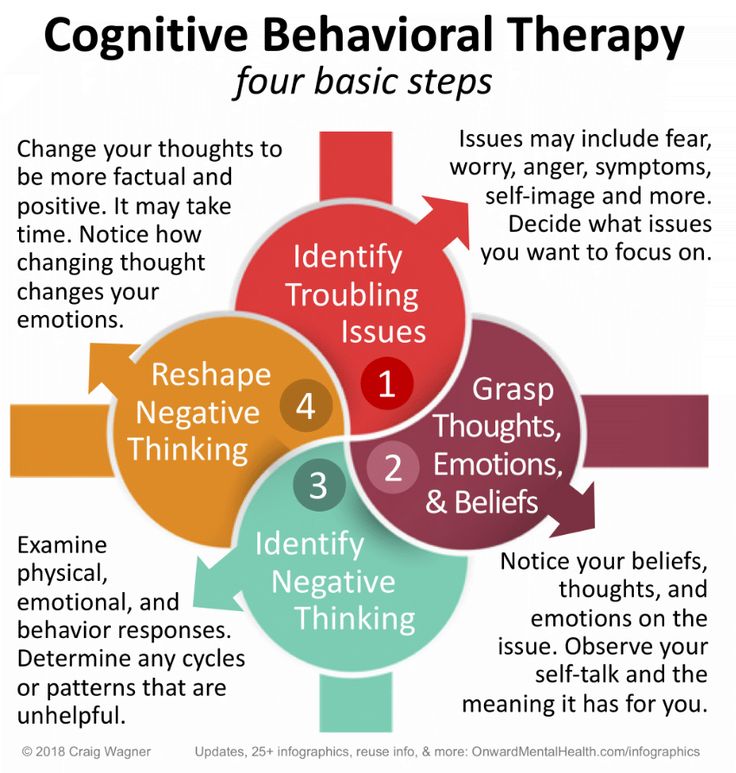
Types of Therapy for Anxiety
The goal of all therapeutic interventions is to help you with anxiety identify the source of your anxiety, understand your triggers, and learn new ways to change your reaction to them. Some types of therapy teach techniques to help you replace negative thoughts and change your behaviors.
Because each anxiety disorder has significant differences, your psychological treatment is tailored to your specific symptoms and type of anxiety. Therapy can be conducted in individual, couple, family, or group settings. The frequency of your therapy appointments and the length of your treatment will depend on your anxiety symptoms and anxiety disorder.
Psychiatrists, clinicians, psychologists, and other mental health professionals use different types of therapy to treat anxiety. Depending on your specific symptoms, diagnosis, and preferences, you’ll be able to work with your therapist to determine the most appropriate treatment plan. Different types of psychotherapy used in the treatment of anxiety disorders include the following.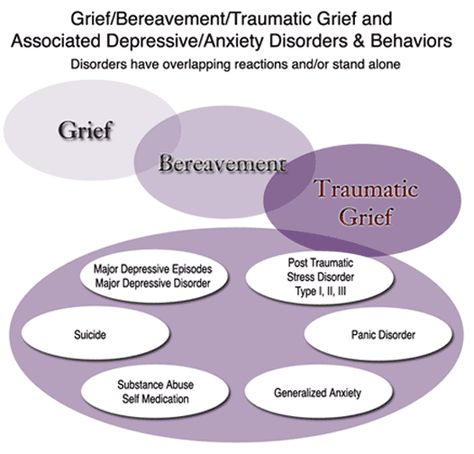
Cognitive-Behavioral Therapy
Cognitive-behavioral therapy (CBT) is highly effective in the treatment of anxiety. During CBT treatment, your psychologist will help you learn different ways to identify and manage the factors that contribute to your anxiety.
CBT involves a combination of cognitive therapy and behavior therapy. Through cognitive therapy, you’ll learn the basics of cognitive restructuring, which involves identifying the thoughts that trigger their anxiety. By learning how to replace negative thoughts with more realistic thoughts, you can improve their anxiety symptoms. Meanwhile, through behavior therapy, you’ll learn CBT methods to reduce problematic behaviors associated with anxiety-related disorders. During behavior therapy, your psychologist will encourage you in anxiety-provoking activities, and you’ll learn that your feared outcomes are unlikely.
Cognitive-behaviour therapy is also an effective treatment for a wide range of mental health conditions, including major depression, autism spectrum disorder (ASD), and mood disorders.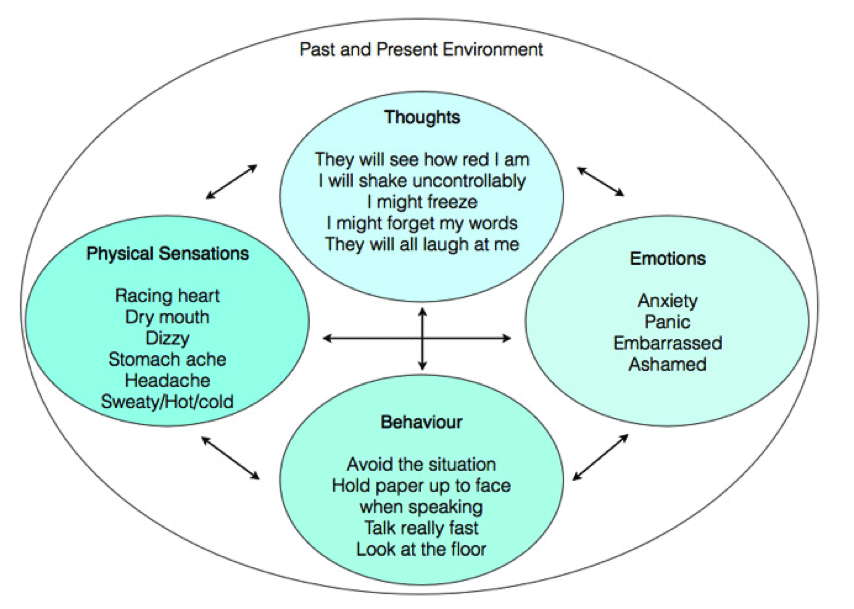 A systematic review and meta-analysis of CBT found that the effects of cognitive-behavioral therapy showed robust efficacy in reducing anxiety symptoms in youth with ASD.
A systematic review and meta-analysis of CBT found that the effects of cognitive-behavioral therapy showed robust efficacy in reducing anxiety symptoms in youth with ASD.
Dialectical Behavior Therapy
Dialectical behavior therapy (DBT), a type of CBT, was originally used to treat borderline personality disorder (BPD). Today, DBT is used to treat a variety of mental illnesses, including anxiety disorders, depressive disorders, and bipolar disorder.
During DBT, you’ll focus on accepting your anxiety while working to change your thoughts and behaviors. DBT teaches four powerful skills: mindfulness, distress tolerance, interpersonal effectiveness, and emotional regulation.
Exposure Therapy
Exposure therapy is a common CBT method used to treat anxiety-related disorders, including social anxiety, specific phobias, and PTSD. Exposure therapy uses a technique known as systematic desensitization, where clients are gradually exposed to anxiety-invoking objects or situations. Systematic desensitization involves the following steps.
Systematic desensitization involves the following steps.
- Relax: Your therapist will teach you relaxation techniques, such as progressive muscle relaxation, guided imagery, and deep breathing to help manage your anxiety symptoms.
- List: Your therapist will help you create a list of your triggers, ranking them in order of intensity.
- Expose: Your therapist will gradually expose you to anxiety-provoking objects or situations, helping you use relaxation techniques to manage your level of anxiety.
There are several ways your therapist may expose you to triggers, including imaginal exposure, in vivo exposure, and virtual reality exposure. According to a 2001 clinical trial, virtual reality exposure therapy is especially helpful in treating PTSD.
Psychodynamic Therapy
Compared to CBT, psychodynamic therapy is a less structured form of therapy that involves exploring the past to achieve insight into present problems.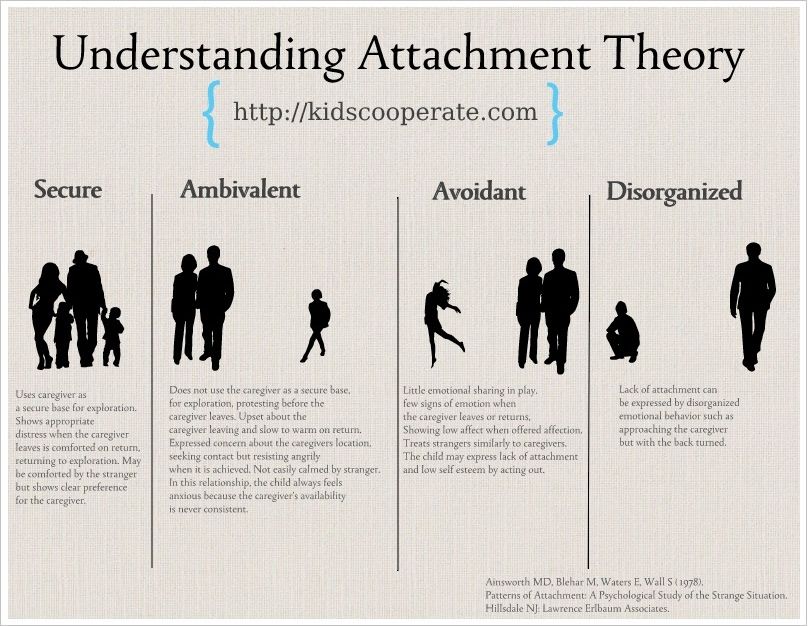 The goal of psychoanalytic therapy is to uncover past conflicts and work through these issues. During psychodynamic therapy, your psychotherapist will work with you to determine the childhood issues that may be linked to adult anxiety disorders.
The goal of psychoanalytic therapy is to uncover past conflicts and work through these issues. During psychodynamic therapy, your psychotherapist will work with you to determine the childhood issues that may be linked to adult anxiety disorders.
Psychodynamic therapy is a supportive therapy that emphasizes the patient-therapist relationship. In a recent study of the long-term outcomes of CBT and psychodynamic therapy, social anxiety patients reported remission rates of 40% for both types of therapy, demonstrating that both CBT and psychoanalysis are efficacious treatments for anxiety disorders and other psychiatric disorders.
Interpersonal Therapy
Interpersonal therapy (IPT) is a form of psychotherapy commonly used in the treatment of depression and anxiety disorders. During IPT, you’ll learn how to recognize interpersonal issues, such as conflicts with loved ones, avoidance, and problems communicating with others. With the help of your therapist, you’ll learn healthy ways to express emotions and communicate with others.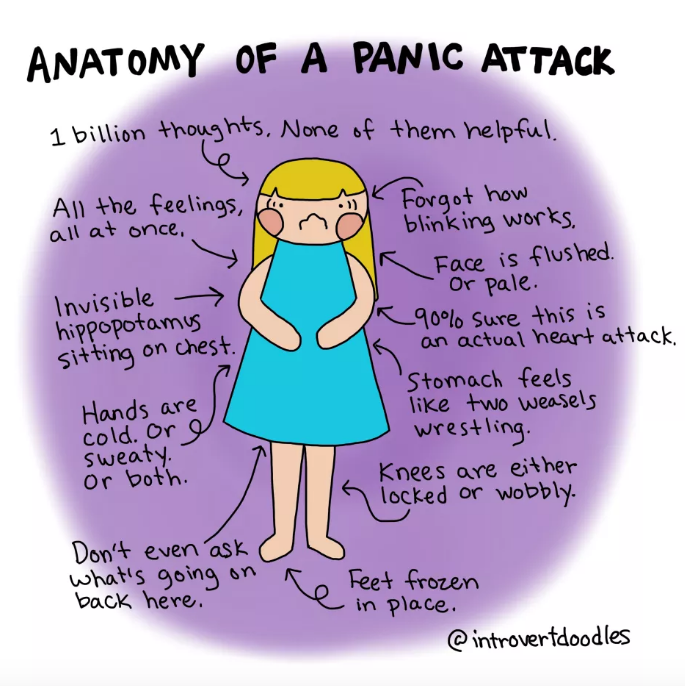
Acceptance and Commitment Therapy
Acceptance and commitment therapy (ACT) is also an effective treatment for anxiety and related disorders. During ACT, you’ll learn different ways to identify your life values and act according to those values.
Researchers found that internet-based ACT treatment works for a variety of anxiety disorders. In an additional study, a combination of commitment therapy and cognitive therapy was shown to be effective in treating anxiety and depression patients in clinical practice.
Eye Movement Desensitization and Reprocessing
Though practiced less than in the past, eye movement desensitization and reprocessing therapy (EMDR) is a form of therapy designed to alleviate the stress associated with traumatic experiences. During EMDR, your therapist will direct eye movements to external stimuli. In some cases, other stimuli, including hand-tapping and audio stimulation, are used during EMDR.
Numerous research studies have shown that EMDR therapy can help people experience the benefits of psychotherapy in the short term.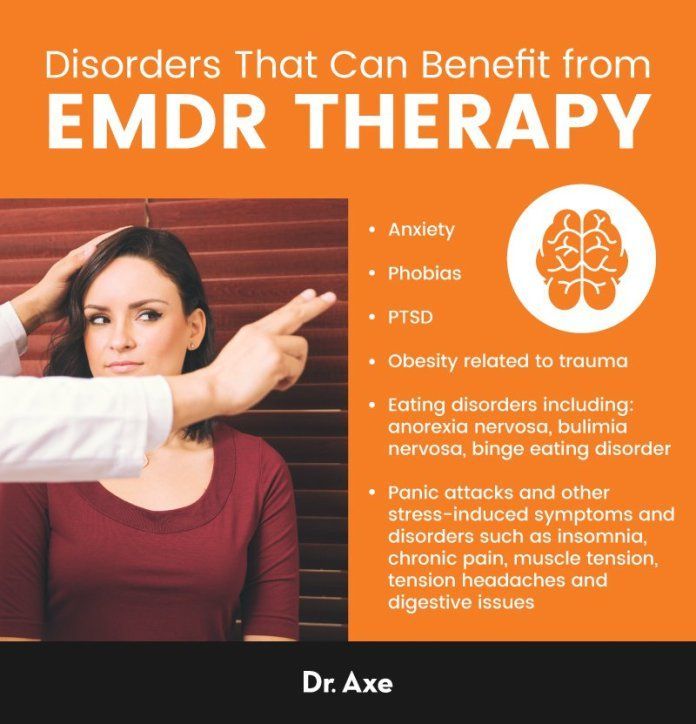 Especially for individuals with PTSD, EMDR can help start the healing process and promote relapse prevention posttreatment, according to several analyses.
Especially for individuals with PTSD, EMDR can help start the healing process and promote relapse prevention posttreatment, according to several analyses.
What to Expect from Therapy
Contrary to popular belief or what you see on TV, you won’t instantly be cured after your first therapy session. In fact, you may experience ups and downs as you continue treatment. You are apt to feel relief and renewed hope that you’ll be able to make changes to improve your life. When you decide to seek professional help for your anxiety, you’ll be able to explore your anxiety, recognize your triggers, and identify the cause of your negative thoughts and feelings.
If you don’t feel as though you can truly open up to your therapist after your first several sessions, it doesn’t mean therapy isn’t right for you—it just means your psychotherapist isn’t the right match. Some people meet with a few different therapists before finding the best fit for their mental health needs. Ultimately, you may need to try a few different approaches and meet with multiple therapists before finding a treatment that works for you.
Finding the Right Therapist
The sooner you seek professional help, the sooner you’ll start feeling better. Even if your anxiety symptoms don’t interfere with your ability to function, they can still negatively impact your mental health and quality of life.
Whether you’re interested in psychodynamic psychotherapy, internet-based cognitive-behavioral therapy (ICBT), or group counseling, reach out to a mental health professional through The Therapy Group of DC. At The Therapy Group of DC, we know that starting psychological treatment can feel daunting, especially given the stress and uncertainty surrounding COVID-19.
Our real-time intelligent therapy scheduling system will help you find a therapist you feel comfortable with. One of our licensed counseling psychologists or clinical psychologists will help you manage your anxiety, learn healthy ways to cope with anxiety symptoms, and take control of your mental health.
Psychotherapy for Anxiety: All Your Options
Therapy is a powerful tool in managing your anxiety symptoms — but what type of therapy is right for you?
If you live with anxiety, you might be used to symptoms that interfere with your daily life.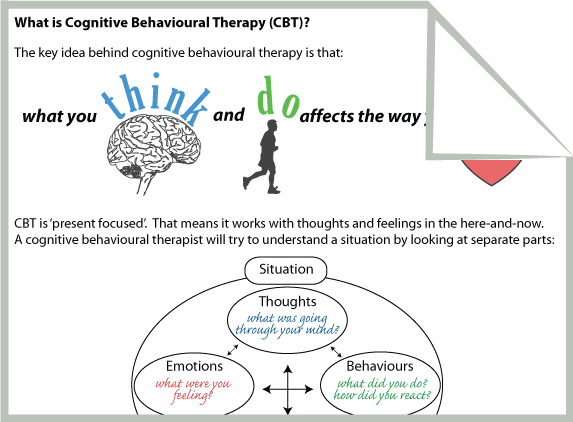 You might see danger around every corner, question your relationships, or even recognize only the worst of yourself in many situations.
You might see danger around every corner, question your relationships, or even recognize only the worst of yourself in many situations.
It’s likely that if you have an anxiety disorder, it might be making your worst fears seem much more threatening than they actually are — but even if you’re well aware of this, it can be difficult to shed those worries.
That’s where therapy can come in. If you choose to seek therapeutic support for your anxiety, you’ll find there are many approaches to managing it. Some focus on your thought patterns, and others might place more emphasis on your relationships.
Depending on the roots and sources of your anxiety, different types of therapy could offer more benefits. You might also choose a type of therapy based on what’s available in your area and what therapist seems like a good match for you on a personal level.
If you’ve never talked with a therapist before, you might feel anxious about taking that step. And it’s common to experience more anxiety around things that aren’t familiar to us.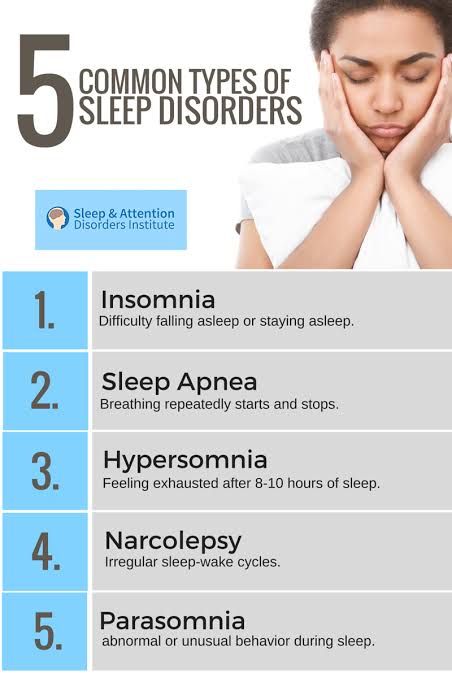
Reading up on what kind of therapy you might be interested in beforehand is one way to start familiarizing yourself with how therapy could add to your anxiety-managing toolkit.
CBT is one of the most commonly used forms of therapy. According to the American Psychological Association (APA), it can help treat many conditions, including:
- depression
- anxiety
- addiction
One key tenet of CBT is a belief that psychological conditions (like anxiety) are based in part on thinking patterns and in part on learned behavior. So CBT aims to address and reframe thought patterns and provide you with tools to help you cope with anxiety when it flares up.
In CBT, you might learn to recognize patterns of distorted thinking and then reevaluate those thoughts. You might also practice confronting sources of anxiety, armed with relaxation and calming techniques.
Research has found CBT can be a successful treatment option for teens with social anxiety disorder, especially when started early.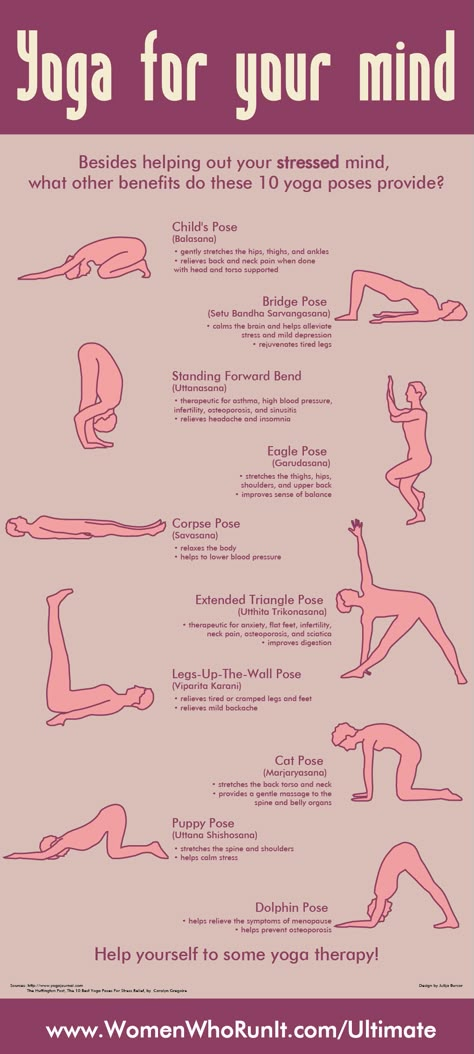
Many studies also support the use of CBT in the treatment of a variety of anxiety disorders.
DBT, a specific type of CBT, was originally developed as a treatment for borderline personality disorder (BPD). Since one of the main goals is to help the person in therapy change behavior patterns, it could also help if you experience anxiety.
DBT may be especially helpful for people with anxiety disorders who self-harm or who have coping habits that don’t serve them.
Treatment often includes teaching mindfulness and helping you live in the moment. It can also provide you with tools for dealing with distressing situations and improving your own emotional regulation.
Research has found DBT to be a successful treatment option for managing physical anxiety symptoms, even when compared to other options such as medication and other therapies.
ACT encourages you to accept thoughts and feelings as appropriate responses to your circumstances. In ACT, you may also learn skills to keep these thoughts and feelings from holding you back.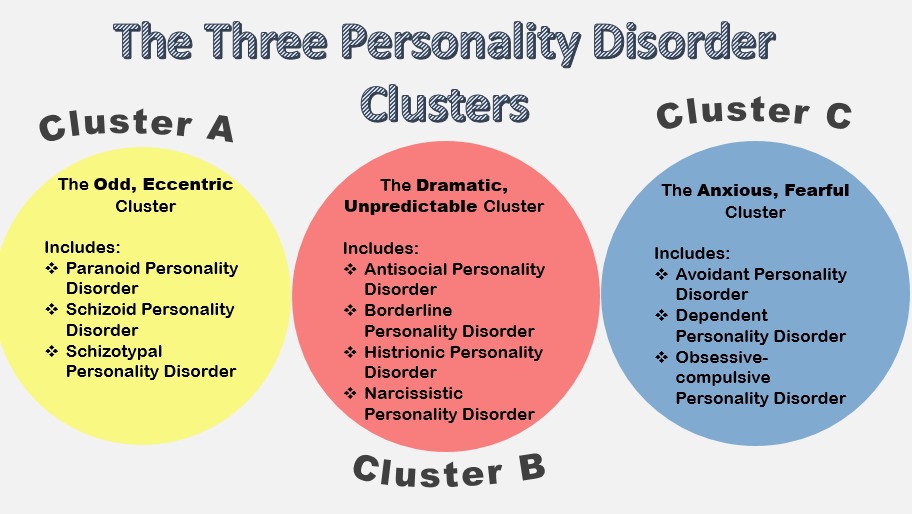 This involves letting go of shame surrounding those feelings, while also equipping you with tools to overcome them.
This involves letting go of shame surrounding those feelings, while also equipping you with tools to overcome them.
Another therapy that stems from CBT, research suggests ACT could help reduce your anxiety levels. It may be especially beneficial if you have test anxiety or social anxiety.
The goal of psychodynamic therapy is to address unconscious feelings and desires that may be at the root of your anxiety. You might work with a therapist to recognize and address things about yourself you might not be aware of currently. This awareness can then help you change behaviors that might have stemmed from these feelings.
Psychdodynamic therapy may last around 2 years, and it’s one of the oldest forms of modern therapy.
Sessions may focus on helping you work through a stalled stage of development. Research supports the effectiveness of online psychodynamic therapy for treating social anxiety disorder in particular.
As the name suggests, the goal of interpersonal therapy is to improve interpersonal relationships.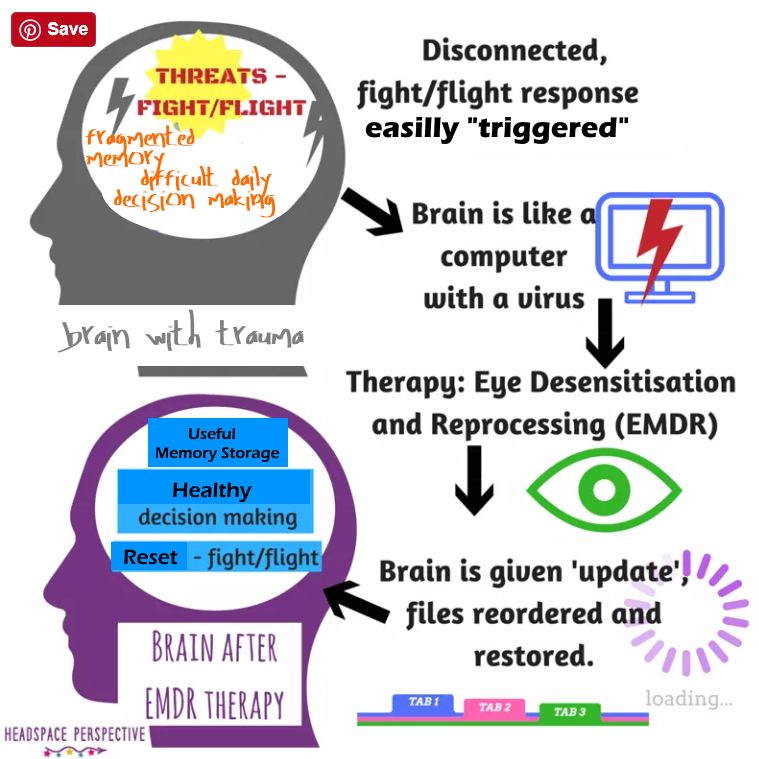 You could consider this option if anxiety impacts your social functioning, such as living with social anxiety disorder.
You could consider this option if anxiety impacts your social functioning, such as living with social anxiety disorder.
Treatment involves working with your therapist to develop a feeling of being seen, heard, and understood. Treatment is typically short term and time-limited (roughly 12 to 16 weeks), taking place in three phases:
- diagnosis
- development of tools and strategies
- phasing out of therapy sessions
Researchers have recently begun studying the effectiveness of online interpersonal therapy for stress, anxiety, and depression, with promising results.
Also called rational emotive behavior therapy (REBT), RET aims to help you identify, challenge, and replace self-defeating thoughts and feelings.
This is typically a short-term treatment, with completion occurring in as few as five sessions. These sessions consist of learning:
- problem-solving skills
- cognitive restructuring
- coping techniques
Over 50 years of research has found REBT to be an effective treatment method for various mental health conditions, including anxiety.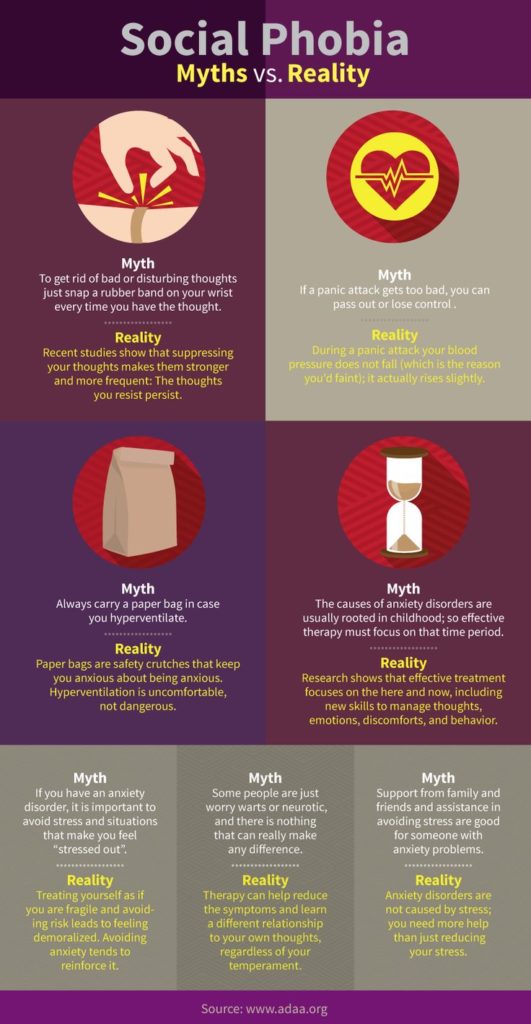 It has also been shown helpful for adolescents and youth.
It has also been shown helpful for adolescents and youth.
Sometimes called tapping, EFT combines traditional therapy with alternative medicine philosophies. In EFT, you cultivate and learn techniques to use when experiencing emotional distress.
EFT typically takes place in five steps:
- identifying the issue
- evaluating the intensity at which the issue is felt
- establishing a mantra you can repeat when dealing with the issue
- learning the tapping sequence
- evaluating the intensity at which the issue is felt after tapping
Multiple studies have found a variety of physical and mental health benefits to EFT, including a 40% reduction in anxiety, according to some research.
Intending to reduce the impact of traumatic experiences, EMDR is typically a short-term treatment option. Sessions occur one to two times a week, generally lasting no more than 6 to 12 sessions.
These sessions involve sharing a memory of a traumatic event while the therapist directs your eye movements.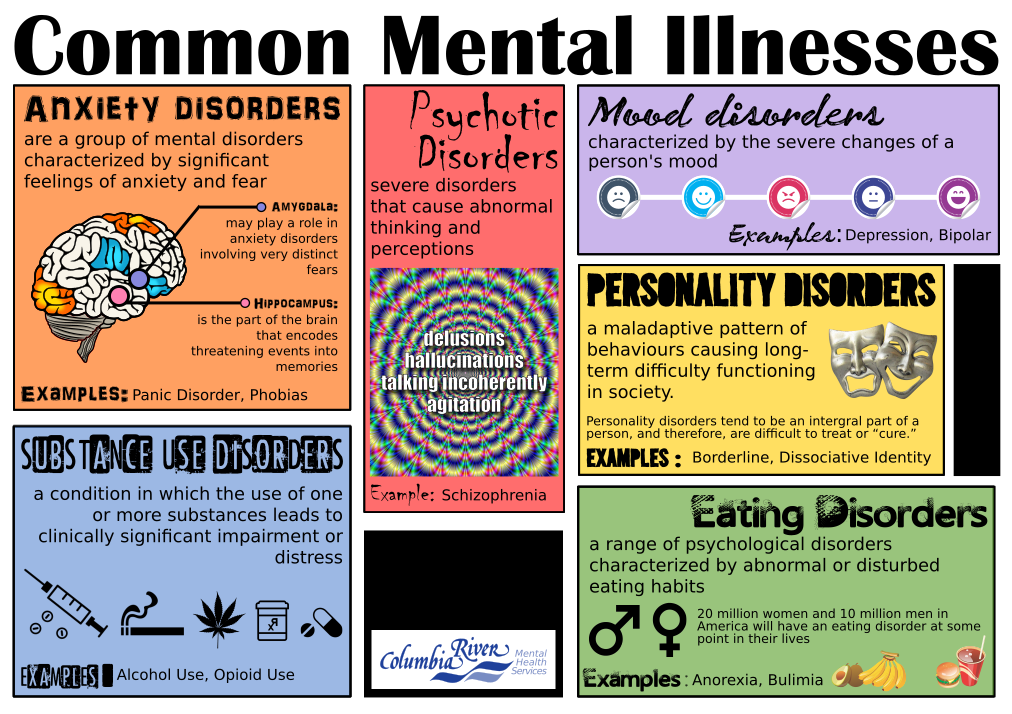 The idea is that these eye movements allow you to reprocess and restore the memory of the trauma in a way that doesn’t continue to cause trauma symptoms. Some people describe this as taking the power out of the traumatic memory.
The idea is that these eye movements allow you to reprocess and restore the memory of the trauma in a way that doesn’t continue to cause trauma symptoms. Some people describe this as taking the power out of the traumatic memory.
While initially developed for the treatment of PTSD, research has found it to be an effective treatment option for any type of anxiety stemming from trauma.
To understand schema therapy, it can help first to understand what a schema is: a maladaptive thought or behavioral pattern most often developed in response to unmet needs in childhood.
Schema therapy is an integrative treatment option that combines several therapeutic modalities with the ultimate aim of recognizing and addressing your own schemas. This can equip you with the skills to get your emotional needs met in constructive ways rather than living out patterns that don’t serve you.
Originally designed to treat personality disorders, schema therapy has shown efficacy in treating anxiety as well.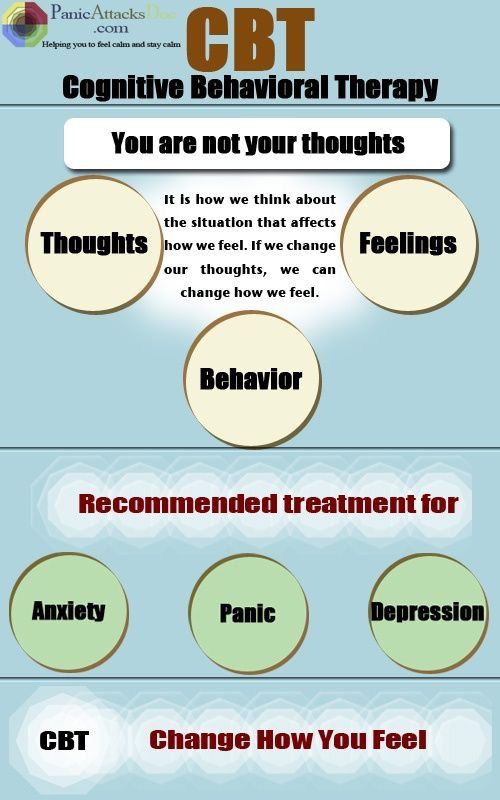
If you’ve decided to pursue therapy for your anxiety, consulting with your care physician can be a good first step. They can help you to determine what type of therapy might best suit your needs and offer recommendations for therapists in your area who may be able to help.
Another option is to call your health insurance company and request a list of recommendations from them.
If those options aren’t available to you, or if you don’t feel a connection with the suggested therapists, you can try other ways of finding a referral, including:
- asking friends who they see
- turning to reliable online databases such as the American Psychological Association or the Association of LGBTQ+ Psychiatrists
- checking with your human resources department at work to learn what mental health benefits you may have
- using our Therapist Finder
Maybe you’d like to connect with a therapist, but it’s not in your budget. Here are some tips on finding good low-cost and no-cost therapy options.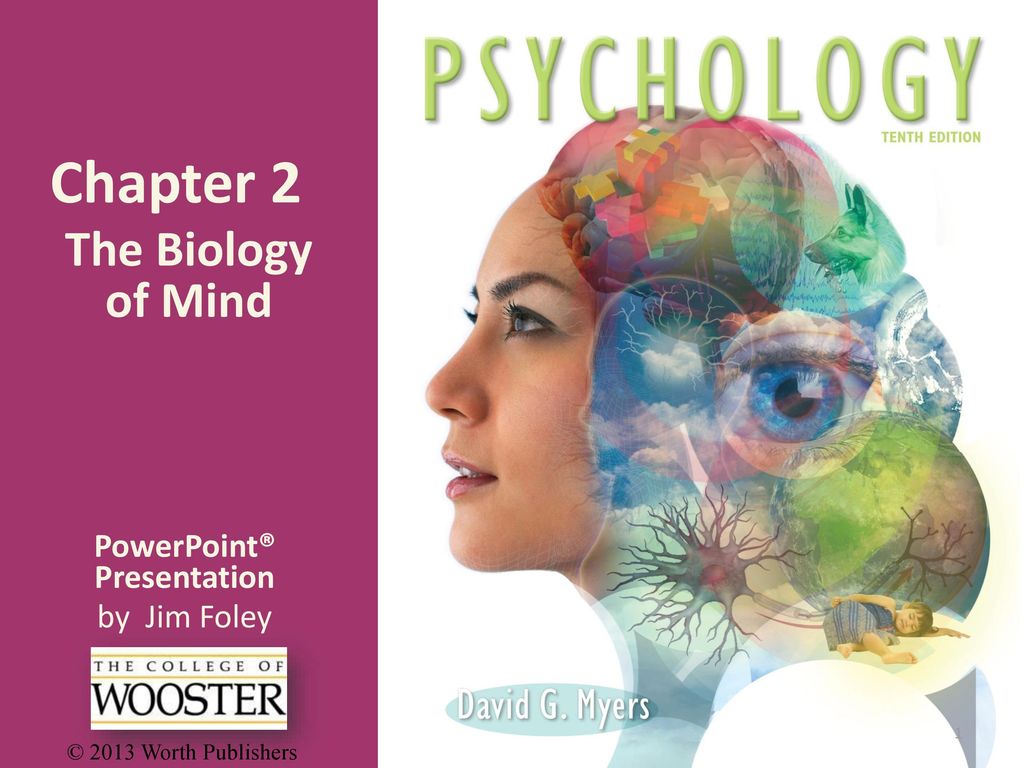
It can take courage to find therapy, especially when you live with anxiety, but it’s often a worthwhile step. Anxiety is a manageable condition, and it’s possible to gain relief from these symptoms.
Therapy of anxiety disorders: a modern view of the problem
Summary. The International Classification of Diseases-10 group of anxiety disorders includes generalized anxiety disorder, panic disorder, specific phobias, and social anxiety disorder (F40 and F41). Anxiety disorders are very common in the general population and occur in every 5th inhabitant of developed countries throughout life. One of the most difficult to treat in this group is Generalized Anxiety Disorder, characterized by excessive worrying about various events or activities, resulting in significant distress and disruption of social, work, and daily functioning. The use of antidepressants is ineffective in about ⅓ of these patients. In modern clinical guidelines, other groups of drugs are indicated in first and second line therapy - anticonvulsants, atypical antipsychotics. Among them, an important place is occupied by pregabalin, a drug of the anticonvulsant group, which is also used for chronic pain syndrome. The article considers the current state of the problem of treating anxiety disorders and (using pregabalin as an example) the feasibility of using alternative drugs to antidepressants.
Among them, an important place is occupied by pregabalin, a drug of the anticonvulsant group, which is also used for chronic pain syndrome. The article considers the current state of the problem of treating anxiety disorders and (using pregabalin as an example) the feasibility of using alternative drugs to antidepressants.
Urgency
Anxiety disorders are among the most common mental health problems in the world. In addition, among all medical problems, anxiety also occupies a leading position in terms of prevalence. Within the framework of epidemiological studies, it is customary to talk about two variants of the prevalence of any condition - annual, that is, an assessment of this indicator in a small time slice (12-month prevalence), and lifelong - the proportion of people who have experienced this condition at least once. For the entire group of anxiety disorders, research has shown a 12-month prevalence of >15% and a lifetime prevalence of >20%.
As a clear demonstration of the relevance of the problem, we present the results of a large-scale study on the assessment of the mental and somatic health of US residents "National Comorbidity Survey".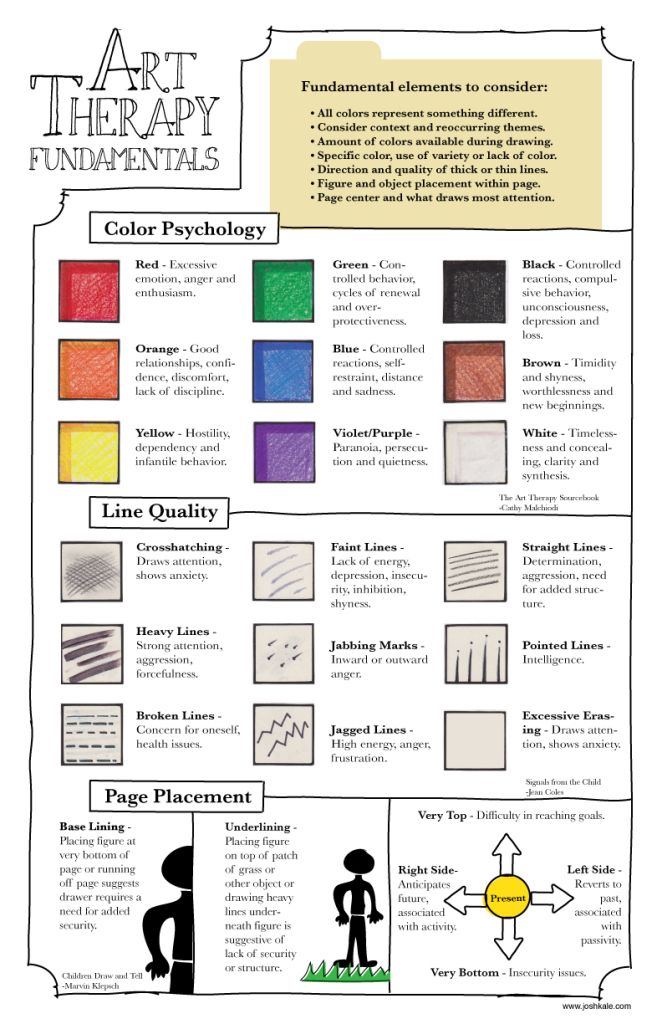 Along with Framingham, this is one of the largest observational studies, the results of which are often used to evaluate epidemiological data and the relationship between various factors that affect health. According to him, the 12-month prevalence of anxiety disorders is 17.2%, which means that every 6th person in the United States develops an anxiety disorder within one year. The lifetime prevalence is 24.9%; this means that every 4th person during his life at least once encounters an anxiety disorder (Kessler R.C. et al., 1994). These data are approximately the same for both Caucasians and African Americans. Thus, with a sufficiently high degree of accuracy, they can be extrapolated to the Ukrainian population.
Along with Framingham, this is one of the largest observational studies, the results of which are often used to evaluate epidemiological data and the relationship between various factors that affect health. According to him, the 12-month prevalence of anxiety disorders is 17.2%, which means that every 6th person in the United States develops an anxiety disorder within one year. The lifetime prevalence is 24.9%; this means that every 4th person during his life at least once encounters an anxiety disorder (Kessler R.C. et al., 1994). These data are approximately the same for both Caucasians and African Americans. Thus, with a sufficiently high degree of accuracy, they can be extrapolated to the Ukrainian population.
An analysis of World Health Organization data suggests that this group of mental health problems is the 6th most common cause of disability in both high-income, middle- and low-income countries, including Ukraine. For every 100 thousand inhabitants of the Earth, anxiety disorders account for 390 years of disability.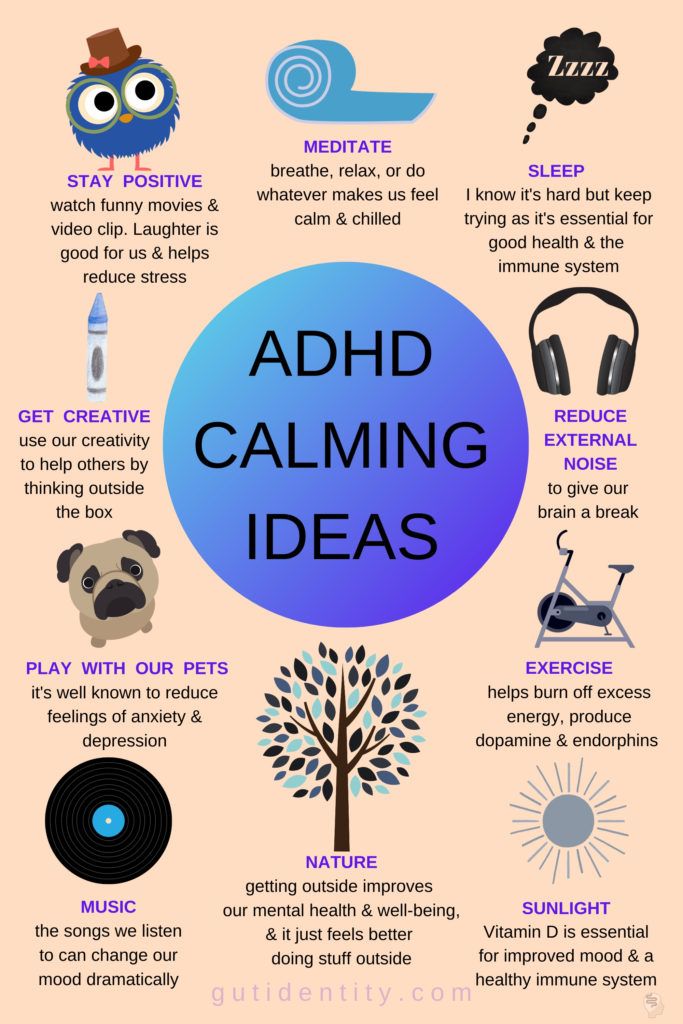 Among women, anxiety disorders are responsible for 65% of all years of life lost (disabled) from all causes (Baxter A.J. et al., 2014).
Among women, anxiety disorders are responsible for 65% of all years of life lost (disabled) from all causes (Baxter A.J. et al., 2014).
Among anxiety disorders, a special place is occupied by generalized anxiety disorder, which is characterized by excessive anxiety and feelings in relation to a large number of events or activities (for example, work), accompanied by severe anxiety, fatigue, irritability, difficulty concentrating, muscle tension and impaired sleep. This state of affairs leads to significant distress and difficulties in social, work or even normal daily functioning. For example, anxiety significantly complicates the performance of work duties, which can lead to job loss or provoke conflict in the family.
The sleep disturbance that often accompanies anxiety can be a serious problem in itself, as anxiety-induced insomnia is usually long-term and thus poorly controlled with benzodiazepines or their derivatives, as they are not recommended for long-term use.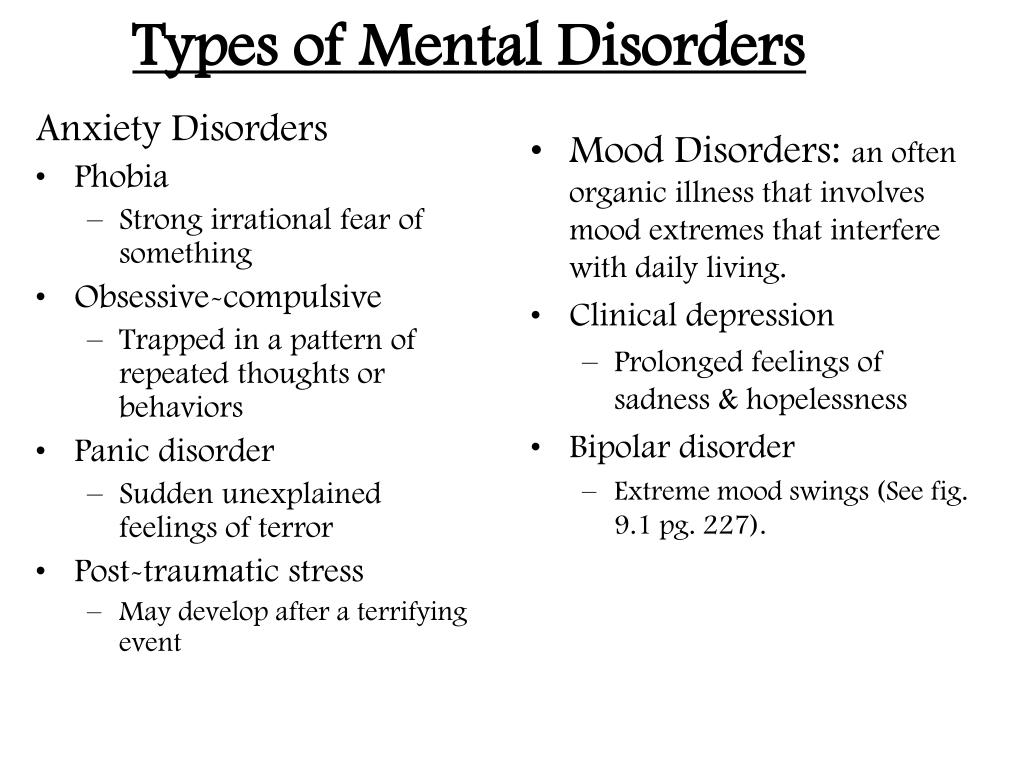 Another serious problem that deserves attention is a significant decrease in the quality of life of patients with anxiety. Given the gradual transition to patient-centered care, it is also recommended to use this indicator as a marker of the severity of the condition, in addition to standard diagnostic measures (clinical scales for assessing anxiety).
Another serious problem that deserves attention is a significant decrease in the quality of life of patients with anxiety. Given the gradual transition to patient-centered care, it is also recommended to use this indicator as a marker of the severity of the condition, in addition to standard diagnostic measures (clinical scales for assessing anxiety).
Studies have shown that anxiety is associated with a significant reduction in quality of life, especially when taking into account the widely used SF-36 quality of life scale. To a greater extent, the deterioration relates to the psychological and some characteristics of the somatic component of the quality of life. Thus, anxiety is associated with a deterioration in indicators on such a somatic scale as pain intensity. This may be due to the fact that patients with anxiety are often diagnosed with conditions associated with pain, such as chronic tension headache, nonspecific back pain, and a number of others. As an example, let's cite the results of a large-scale multinational survey, which also included Ukraine.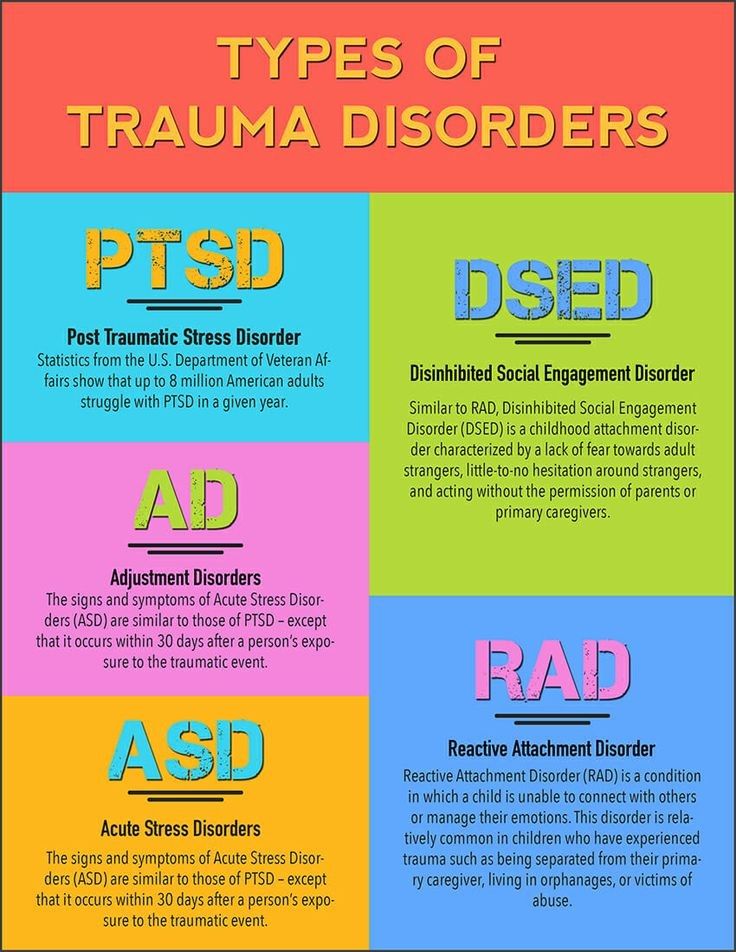 According to the data obtained in our country, chronic pain has been noted in 19 patients over the past 12 months..7% of patients with anxiety or depression (Tsang A. et al., 2008). Thus, every 5th patient with an anxiety disorder also needs therapy aimed at eliminating pain.
According to the data obtained in our country, chronic pain has been noted in 19 patients over the past 12 months..7% of patients with anxiety or depression (Tsang A. et al., 2008). Thus, every 5th patient with an anxiety disorder also needs therapy aimed at eliminating pain.
Evidence-based therapy
A rational approach to patient care includes both an individualized approach, taking into account the characteristics of each individual case, and reliance on the existing evidence base, including clinical guidelines, meta-analyses and the results of recent randomized controlled clinical trials.
The National Institute for Health and Care Excellence (NICE), UK, is one of the well-known and leading providers of evidence-based clinical guidelines. In the latest guidelines on the quality standard of care for anxiety, a team of leading experts note that benzodiazepines and antipsychotics should be avoided in routine practice in patients with anxiety disorders (NICE, 2014).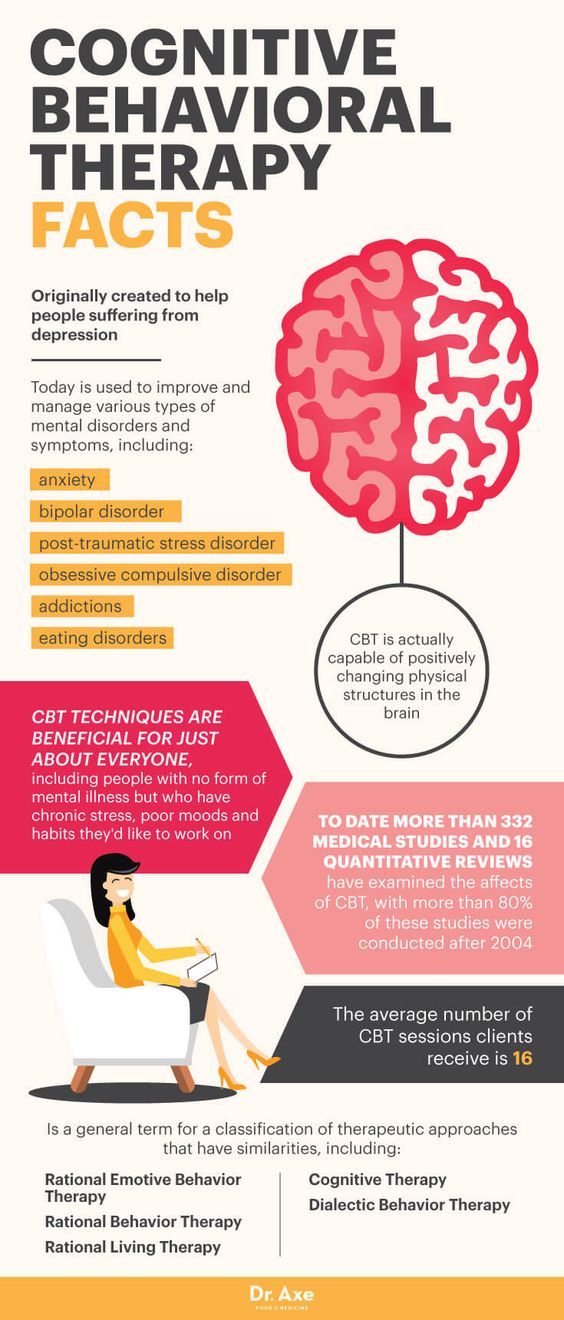 These recommendations are explained by the fact that taking the former is associated with the development of tolerance and dependence, and the latter with a relatively high risk of side effects. The authors recommend taking this into account, and if prescribed, then a short course in cases of exacerbation of symptoms, when other methods of treatment do not demonstrate sufficient effectiveness. Thus, antidepressants and/or cognitive-behavioral therapy are recommended as first-line therapy. For the pharmacological treatment of anxiety, in particular generalized anxiety disorder, NICE recommends selective serotonin reuptake inhibitors (SSRIs), selective serotonin and norepinephrine reuptake inhibitors (SNRIs), and pregabalin. The authors of the guidelines note that one should also be aware of the possible withdrawal syndrome when using SSRIs and SNRIs, especially paroxetine and venlafaxine.
These recommendations are explained by the fact that taking the former is associated with the development of tolerance and dependence, and the latter with a relatively high risk of side effects. The authors recommend taking this into account, and if prescribed, then a short course in cases of exacerbation of symptoms, when other methods of treatment do not demonstrate sufficient effectiveness. Thus, antidepressants and/or cognitive-behavioral therapy are recommended as first-line therapy. For the pharmacological treatment of anxiety, in particular generalized anxiety disorder, NICE recommends selective serotonin reuptake inhibitors (SSRIs), selective serotonin and norepinephrine reuptake inhibitors (SNRIs), and pregabalin. The authors of the guidelines note that one should also be aware of the possible withdrawal syndrome when using SSRIs and SNRIs, especially paroxetine and venlafaxine.
The American Academy of Family Physicians (AAFP) and the American Psychiatric Association (APA) are other well-known organizations that compile guidelines for the treatment of mental disorders, offering the same psychological and pharmacological treatments. We are talking, in particular, about the guidelines for the diagnosis and management of generalized anxiety and panic disorder (AAFP, 2015) and the APA clinical guidelines (2009) only for panic disorder, which practically duplicate the above, however, the regimens for prescribing drugs and psychological methods of treatment are prescribed in more detail. The list of recommended drugs is presented in the table.
We are talking, in particular, about the guidelines for the diagnosis and management of generalized anxiety and panic disorder (AAFP, 2015) and the APA clinical guidelines (2009) only for panic disorder, which practically duplicate the above, however, the regimens for prescribing drugs and psychological methods of treatment are prescribed in more detail. The list of recommended drugs is presented in the table.
Table AAFP recommended drugs for first and second line therapy
for generalized and panic disorder
| Drug | Recommendations |
|---|---|
| SSRI | |
| Escitalopram | Generalized anxiety disorder, panic disorder |
| Fluvoxamine | Panic disorder |
| Fluoxetine | Generalized anxiety disorder, panic disorder |
| Paroxetine | Generalized anxiety disorder, panic disorder |
| Sertraline | Generalized anxiety disorder, panic disorder |
| SNRI | |
| Duloxetine | Generalized anxiety disorder |
| Venlafaxine | Generalized anxiety disorder, panic disorder |
| Azaperone | |
| Buspirone | Generalized anxiety disorder |
| Tricyclic antidepressants | |
| Amitriptyline | Generalized anxiety disorder, panic disorder |
| Imipramine | Generalized anxiety disorder, panic disorder |
| Nortriptyline | Generalized anxiety disorder, panic disorder |
| Antiepileptic drugs | |
| Pregabalin | Generalized anxiety disorder |
| Antipsychotics | |
| Quetiapine | Generalized Anxiety Disorder |
In addition to the medical communities of Great Britain and the USA, we also note the World Federation of Biological Psychiatry, which brings together specialists from different countries.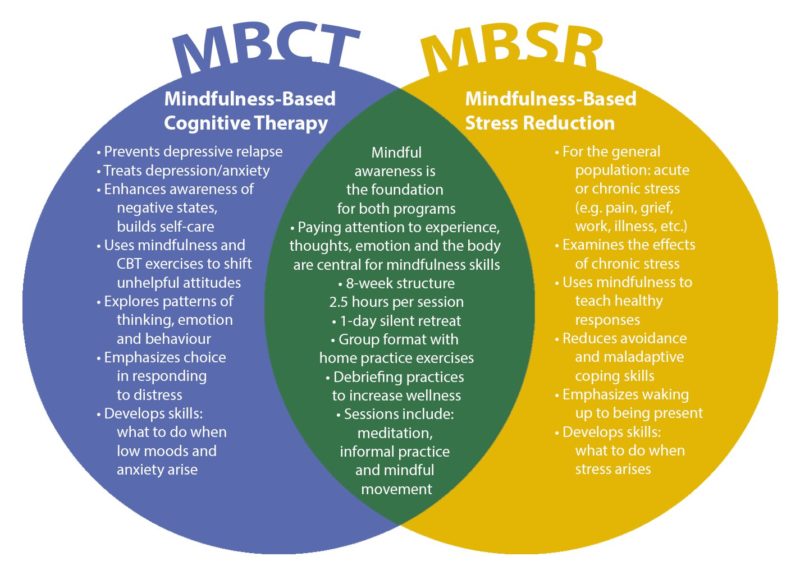 In 2012, based on a review of the evidence base, this organization also published clinical guidelines for the treatment of anxiety disorders. The authors separately identified for panic, generalized disorder and social anxiety drugs included in first-line therapy:
In 2012, based on a review of the evidence base, this organization also published clinical guidelines for the treatment of anxiety disorders. The authors separately identified for panic, generalized disorder and social anxiety drugs included in first-line therapy:
- for social anxiety: escitalopram, fluvoxamine, paroxetine, sertraline, venlafaxine;
- for panic disorder: same drugs + citalopram and fluoxetine;
- for generalized disorder: escitalopram, paroxetine, sertraline, venlafaxine, quetiapine, and pregabalin.
Particular attention in this list should be given to pregabalin, which belongs to the group of antiepileptic drugs. It should be noted that for a long time in the medical and pharmacological communities there has been a discussion of changing the existing approach to the classification of psychotropic drugs. Often the name of a group of drugs, such as antidepressants, antipsychotics (neuroleptics), or anticonvulsants (antiepileptic drugs), does not correspond to the diagnosis for which they are prescribed.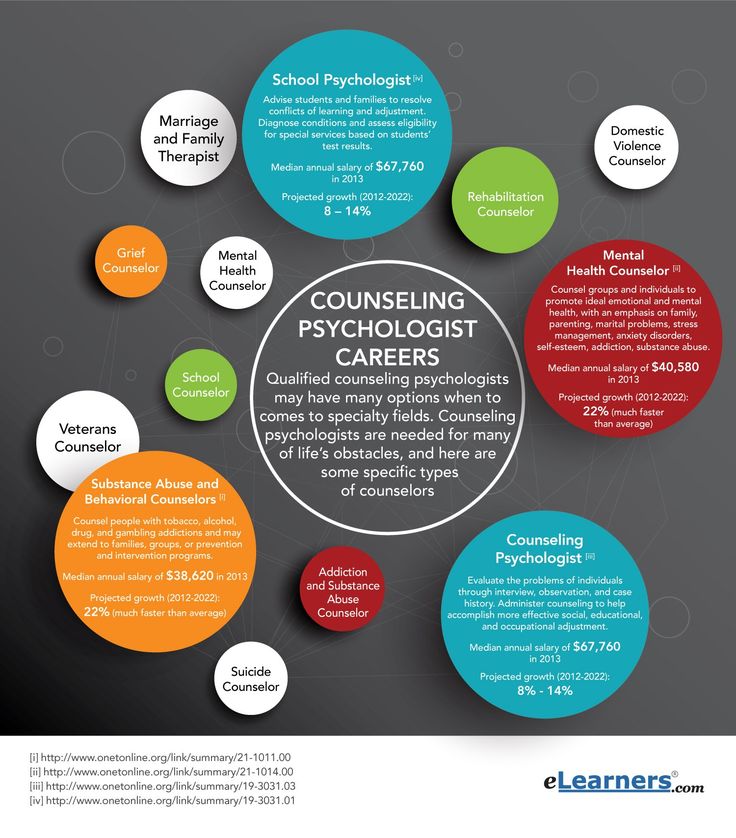 So, antidepressants can be prescribed for anxiety, bulimia; antipsychotics - for anxiety, depression; anticonvulsants - for the same anxiety or bipolar affective disorder. Assigning a prescribed drug to any of these groups often confuses patients, which can be a cause for additional concern or reduced compliance. Discussion of the transition from the old classification model based on symptoms to the new one was one of the main topics of one of the largest annual world conferences on psychiatry and psychopharmacology "ECNP Congress" in 2014, 2015 and 2016, and it is possible that in the near future this new model will be implemented.
So, antidepressants can be prescribed for anxiety, bulimia; antipsychotics - for anxiety, depression; anticonvulsants - for the same anxiety or bipolar affective disorder. Assigning a prescribed drug to any of these groups often confuses patients, which can be a cause for additional concern or reduced compliance. Discussion of the transition from the old classification model based on symptoms to the new one was one of the main topics of one of the largest annual world conferences on psychiatry and psychopharmacology "ECNP Congress" in 2014, 2015 and 2016, and it is possible that in the near future this new model will be implemented.
Pregabalin differs in its chemical structure and mechanism of action from SSRIs and SNRIs, while remaining highly effective in generalized anxiety disorder, as evidenced by its inclusion as first-line therapy in various management guidelines for these patients. Pregabalin is a γ-aminobutyric acid derivative and was originally used and approved by the US Food and Drug Administration and the European Medicines Agency for the treatment of epilepsy and various types of chronic pain syndrome, including diabetic peripheral neuropathy, postherpetic neuralgia, and fibromyalgia.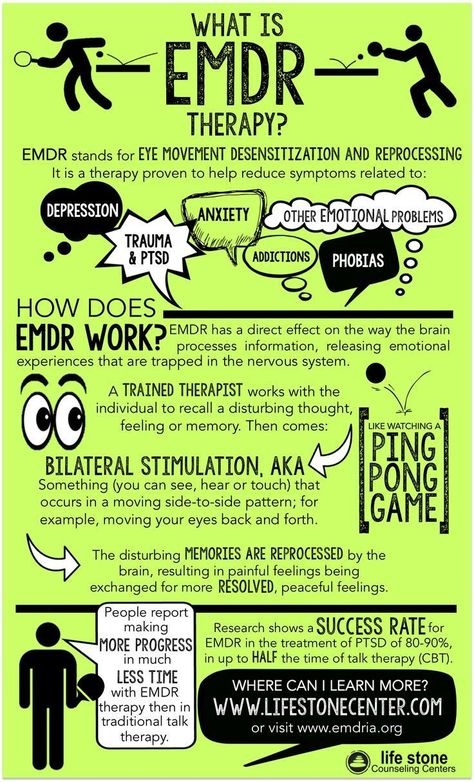 Later evidence began to emerge for its effectiveness in anxiety disorders, especially generalized anxiety disorder and, to a lesser extent, social phobia.
Later evidence began to emerge for its effectiveness in anxiety disorders, especially generalized anxiety disorder and, to a lesser extent, social phobia.
Recently, this drug has increasingly become the subject of study specifically in the context of anxiety treatment as an alternative to SSRIs. The problem of the widespread use of the latter is mainly due to the relatively slow onset of action, the risk of withdrawal syndrome and the lack of a significant effect in relation to such often comorbid conditions as chronic pain syndrome of various origins. In addition, in about ⅓ of patients, the use of SSRIs and SNRIs does not lead to the desired effect and there is a need to look for another therapy with a different mechanism of action.
This was reflected in a systematic review of scientific studies conducted by the staff of the Villa San Benedetto Menni clinics in Rome, Maastricht University and the University of Miami. Summarizing the available evidence base for all drugs used in anxiety disorders, the researchers concluded that pregabalin is highly effective in generalized anxiety disorder.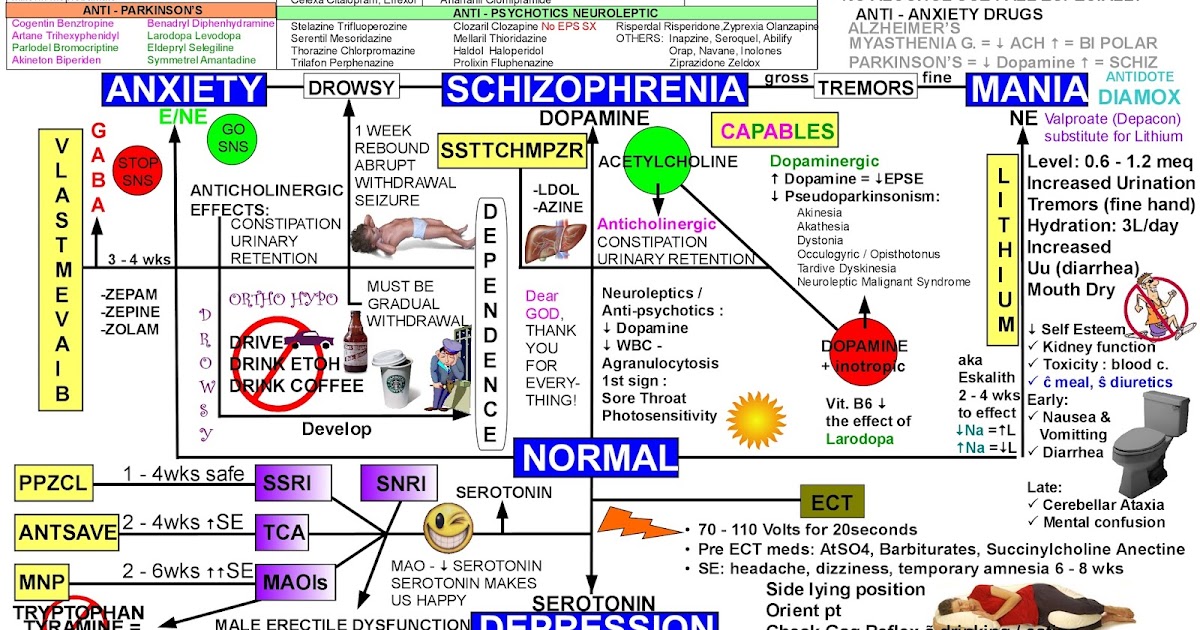 At the same time, as the authors note, the drug showed a low risk of adverse effects with long-term use and did not have a negative effect on cognitive or psychomotor functioning (Perna G. et al., 2016).
At the same time, as the authors note, the drug showed a low risk of adverse effects with long-term use and did not have a negative effect on cognitive or psychomotor functioning (Perna G. et al., 2016).
Also published this year are the results of an analysis of several randomized clinical trials that evaluated the effectiveness of pregabalin in the context of pain reduction and improvement in various areas of functioning. The authors note that taking pregabalin led to a significant reduction in pain, improved sleep quality and physical functioning. The analysis also assessed symptoms of anxiety and depression using the Hospital Anxiety and Depression Scale (HADS). On the one hand, no significant differences were found with the control group (placebo), on the other hand, the study sample consisted of individuals with a low initial level of anxiety and depression, which did not reach the level of clinical significance (6 points each on the HADS anxiety and depression subscales at the threshold level ≥8 points and clinically significant ≥11 points) (Sadosky A. et al., 2016).
et al., 2016).
The problem of anxiety is also relevant for patients undergoing surgical treatment. This disorder often accompanies these patients both in the pre- and postoperative period. In addition, anxiety about the upcoming operation and pain has a negative effect on surgery and anesthesia. A new clinical trial conducted in 2016 demonstrated the effectiveness of pregabalin adjunctive therapy for bone surgery. In this study, patients of the experimental group were premedicated with pregabalin in different dosages before blockade of peripheral nerves. The control group did not receive any additional therapy. According to the results, the use of pregabalin significantly contributed to the maintenance of hemodynamic parameters during the intervention at a normal level and greater patient satisfaction with the quality of anesthesia. When using pregabalin at a dose of 150 and 300 mg, a significantly shorter duration of surgical intervention was also noted compared with the control (76.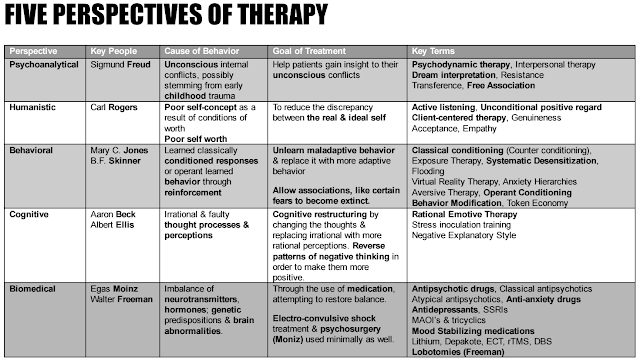 5; 68.0 and 83.3 minutes, respectively).
5; 68.0 and 83.3 minutes, respectively).
Conclusions
Anxiety disorders are a common problem of our time, one of the main characteristics of which is a high comorbidity with both somatic and other mental disorders. The gradual discovery of new drugs and the study of additional properties of already long-term use has replaced benzodiazepines from the first-line therapy recommended in current guidelines for patients with anxiety disorders. Highly effective drugs are not limited to the SSRI and SNRI group; Today, there are other effective medicines classified as anticonvulsants and atypical antipsychotics. In particular, the study of the additional properties of pregabalin has demonstrated its high efficacy in generalized anxiety disorder, which is reflected in the most significant clinical guidelines and recommendations of the European Medical Agency. Experts conclude that pregabalin can be used as a first-line therapy for this disorder, and it may also be the best pharmacological alternative to SSRIs when they are ineffective or poorly tolerated.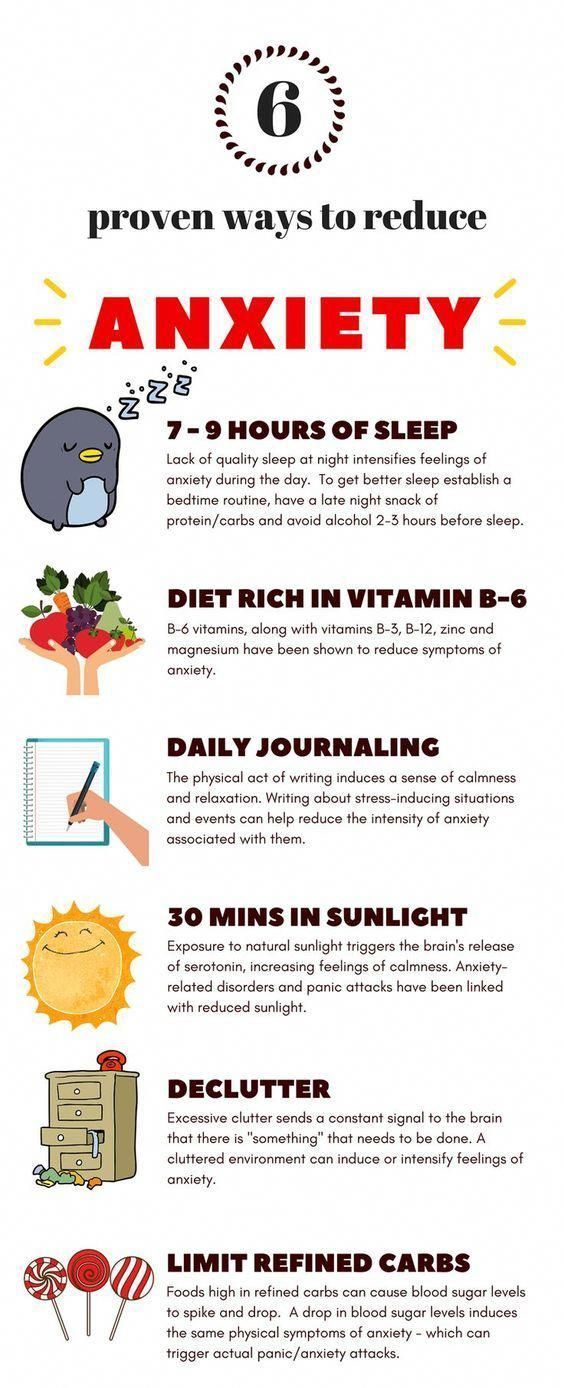 This drug occupies a special place in anxiety in patients with a neurological profile and those undergoing surgical interventions, since, in addition to the effect on anxiety, it reduces the intensity of pain and improves postoperative outcomes.
This drug occupies a special place in anxiety in patients with a neurological profile and those undergoing surgical interventions, since, in addition to the effect on anxiety, it reduces the intensity of pain and improves postoperative outcomes.
List of references
Correspondence address:
Vitaly Grigoryevich Bezsheiko
01030, Kyiv,
st. Mikhaila Kotsiubynskogo, 8A
Ukrainian Research Institute of Social and Forensic Psychiatry and Narcology
Anxiety disorders - treatment, symptoms, causes, diagnosis
Divide several types of anxiety disorders such as panic disorder, social anxiety disorder, specific phobias and generalized anxiety disorder.
Anxiety is a common emotion that everyone experiences at some point in their lives. Many people experience occasional anxiety and nervousness when faced with a problem at work, before taking an exam, or before making a big decision. However, anxiety disorders are different.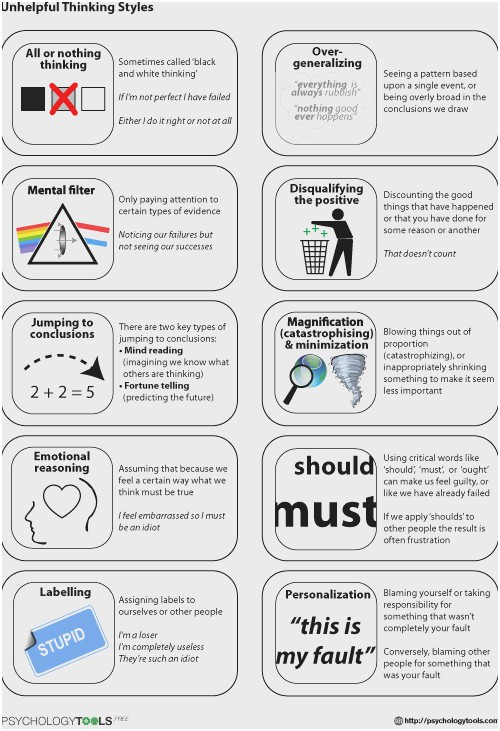 They can cause such a violation of well-being, in which the usual way of life of a person is violated.
They can cause such a violation of well-being, in which the usual way of life of a person is violated.
Anxiety disorder is essentially a mental illness. In patients with anxiety disorders, feelings such as anxiety and fear are persistent and overwhelming, and can have extremely negative consequences. Anxiety disorders are quite common. For example, in America, millions of American adults have anxiety disorders. Most anxiety disorders begin to develop during childhood, adolescence, and early adulthood. Anxiety disorders are slightly more common in women than in men.
Types of anxiety disorders
There are several recognized types of anxiety disorders, including:
- Panic disorder: Patients with this type of anxiety disorder experience a feeling of dread that comes on suddenly and repeatedly. Other symptoms of a panic attack include sweating, chest pain, palpitations (unusually strong or irregular rhythm), and a feeling of suffocation that simulates an angina attack or feeling like the patient is "going crazy".
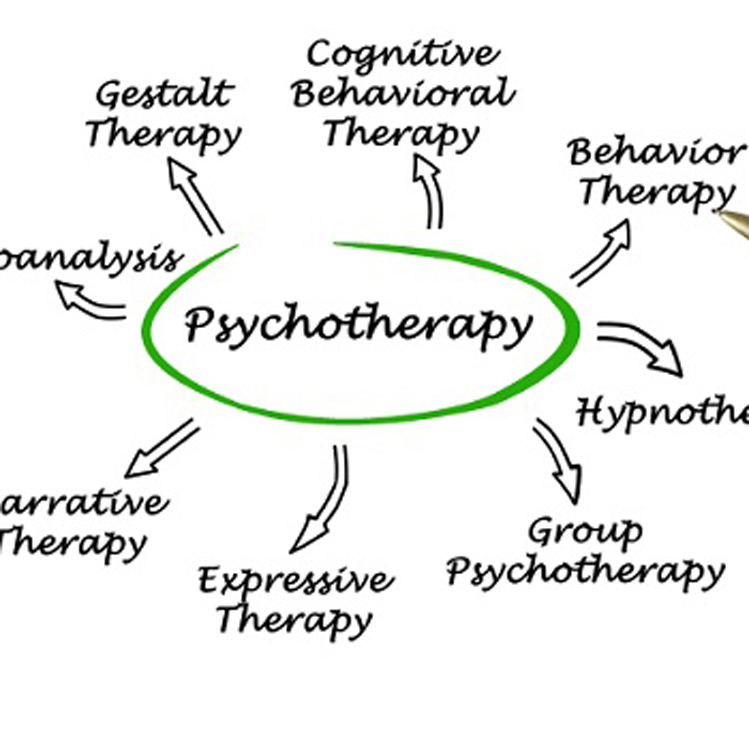
- Social Anxiety Disorder: This type of disorder is also called social phobia. Social anxiety disorder is characterized by overwhelming anxiety and hesitation in normal social situations. Anxiety often centers on the fear of being judged by others, or the expectation of ridicule from others.
- Specific phobias: This type of disorder is characterized by a pronounced fear of a specific object or situation, such as snakes, heights, or flying. The level of fear is usually out of proportion to the situation and can lead the person to avoid normal everyday situations.
- Generalized Anxiety Disorder: This type of disorder is characterized by excessive, unreasonable worry and tension, even when there is nothing to trigger the anxiety.
Symptoms
Symptoms vary depending on the type of anxiety disorder, but common symptoms include:
- Feelings of panic, anxiety and fear
- Sleep disorders
- Feeling cold in the extremities or excessive sweating
- Shortness of breath
- Palpitations
- Inability to be at rest
- Dry mouth
- Numbness or tingling in hands or feet
- Nausea
- Muscle tension
- Dizziness
Causes
The exact cause of anxiety disorders is not yet known; but anxiety disorders, like other types of mental illness, are not the result of individual weakness, character flaw, or bad parenting.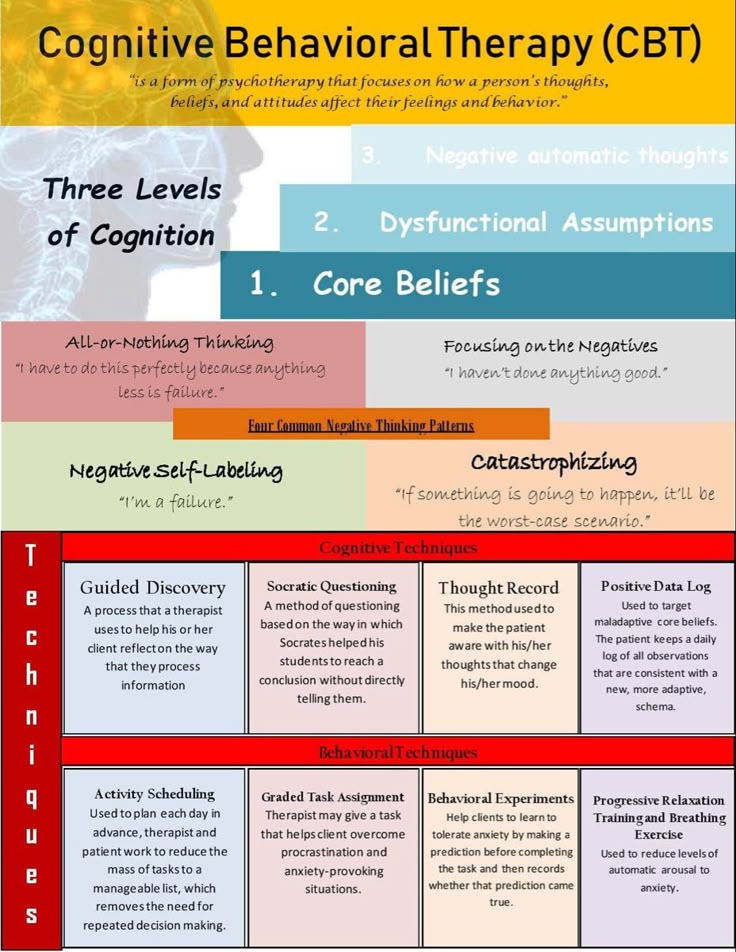 As scientists continue their research into mental illness, it is becoming clear that many of these conditions are due to a combination of factors, including changes in the brain and environmental influences.
As scientists continue their research into mental illness, it is becoming clear that many of these conditions are due to a combination of factors, including changes in the brain and environmental influences.
Like other brain disorders, anxiety disorders can be caused by problems in the circuits in the brain that regulate fear and other emotions. Research has shown that severe or prolonged stress can change the way neurons transmit information from one part of the brain to another. Other studies have shown that people with certain anxiety disorders have changes in certain brain structures that are responsible for memories associated with strong emotions. In addition, studies have shown that anxiety disorders are sometimes genetically determined and can be partially inherited from parents, as well as cardiovascular disease or cancer. In addition, certain environmental factors - such as trauma or significant events - can cause an anxiety disorder in people who have a genetic predisposition to develop the disorder.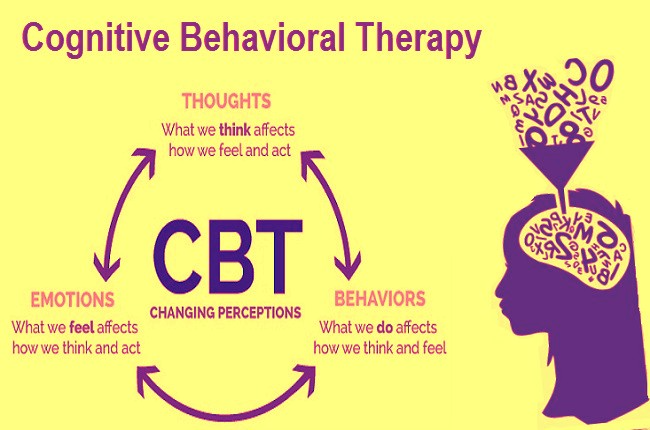
Diagnosis
Diagnosis of anxiety disorders is based primarily on characteristic symptoms, medical history, and physical examination findings. Although there are no methods for accurately diagnosing anxiety disorders, a doctor may prescribe various tests, including laboratory tests, MRI, CT scans, and other methods, as it is necessary to exclude diseases that can cause symptoms similar to those of anxiety disorders. If somatic or other illnesses are ruled out, the patient may be referred for consultation by a psychiatrist or psychotherapist who is specially trained to diagnose and treat mental illness. Psychiatrists and psychologists use specially designed interviews and tests to assess the presence of an anxiety disorder.
Treatment
In the last two decades, great progress has been made in the treatment of people suffering from mental illness, including anxiety disorders. Although the exact treatment approach depends on the type of disorder, one or a combination of the following treatments can be used for most anxiety disorders:
- Medications: Medications used to minimize the symptoms of anxiety disorders include antidepressants and anti-anxiety medications.
